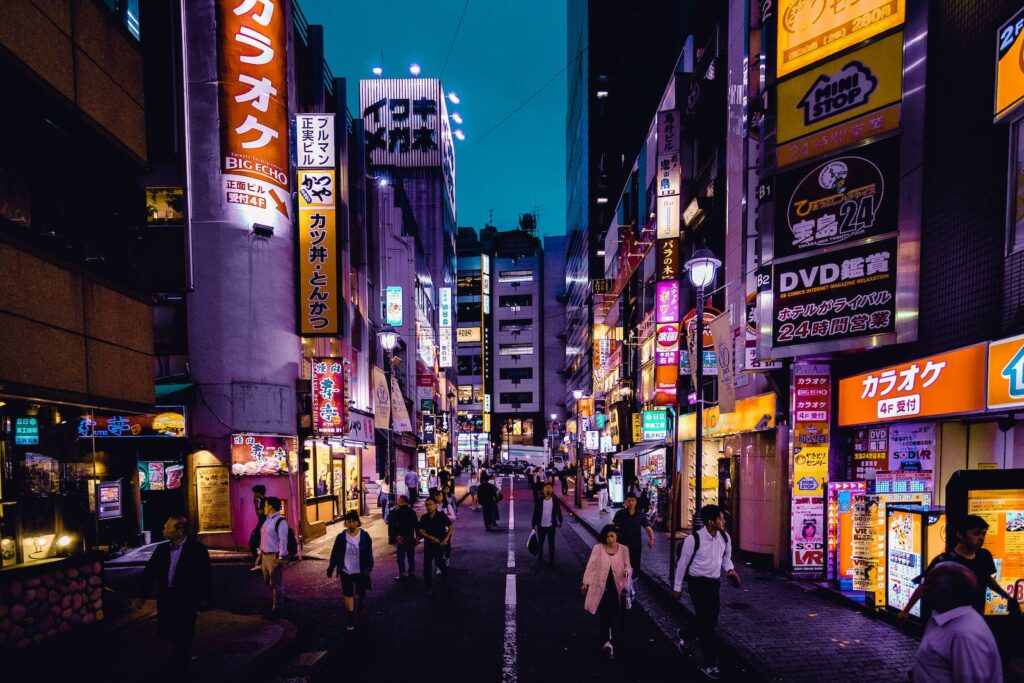A trip to Japan should be on everyone’s bucket list. It is a breathtaking country rich in culture and history, offering a unique blend of traditional lifestyles mixed with modern conveniences. The experience of visiting Japan for two weeks will leave you with an even greater appreciation for this magnificent country. From its ancient temples and shrines to its jam-packed modern cities, there’s something for everyone in Japan. Whether exploring the vibrant culture and cuisine or participating in some of the many activities available, a trip to Japan promises an amazing journey through one of the world’s most fascinating countries. With so much to see and do, you won’t want to miss out on any opportunity during your limited time here!
.It is highly recommended that if you plan to visit this amazing country for 14 days, you begin planning as soon as possible to make the most of your time there. So pack your bags and get ready for an adventure like no other!

Day 1-3: Enjoying the City of Tokyo
Tokyo is the capital of Japan and the world’s most populous metropolis. Its eclectic mix of traditional and contemporary attractions makes it one of the most popular tourist destinations in the country.
Arriving at Tokyo Airport
In most cases, international flights will take you to Tokyo, so your two-week adventure in Japan begins. Tokyo has 2 international airports: Narita and Haneda airports. Most premium flights use Haneda airport, while low-cost carriers use Narita airport. The Haneda airport is closer to the city center.
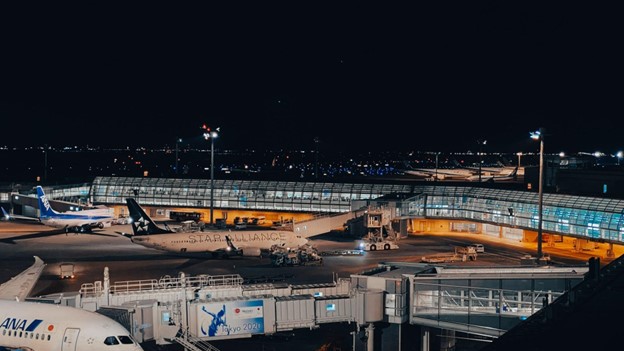
Day 1: Exploring Tokyo
Begin your day 1 by exploring Tokyo’s center after taking some time to rest from your flight. You can head off to the following places:
Ueno Park
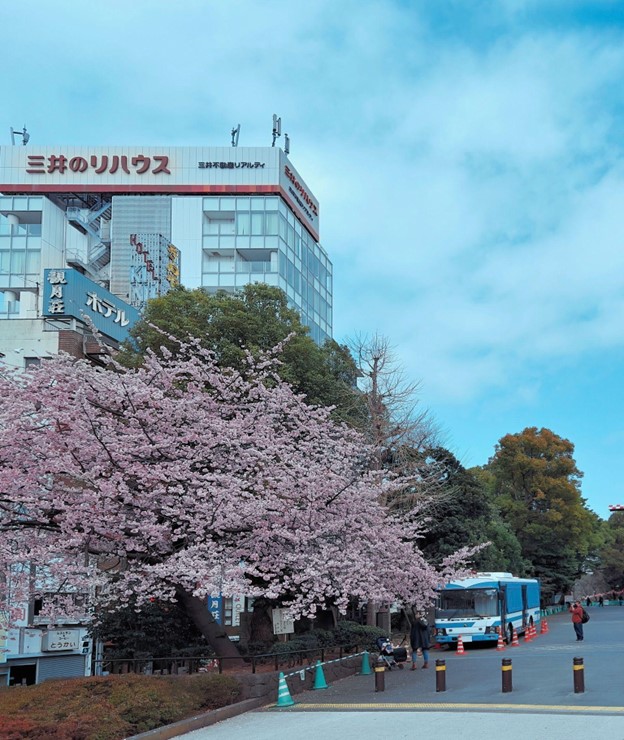
Ueno Park Ueno park is a large public park next to Ueno station. The park is most famous for the many museums located within the park’s grounds. It is also full of ponds, gardens, and temples. It’s one of the best places to observe cherry blossoms if you’re lucky enough to visit during cherry blossom season, which happens from late March to April.
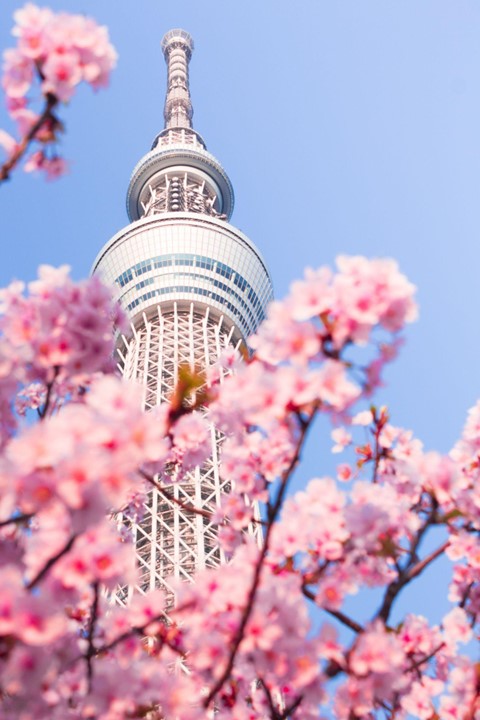
Ameyoko street
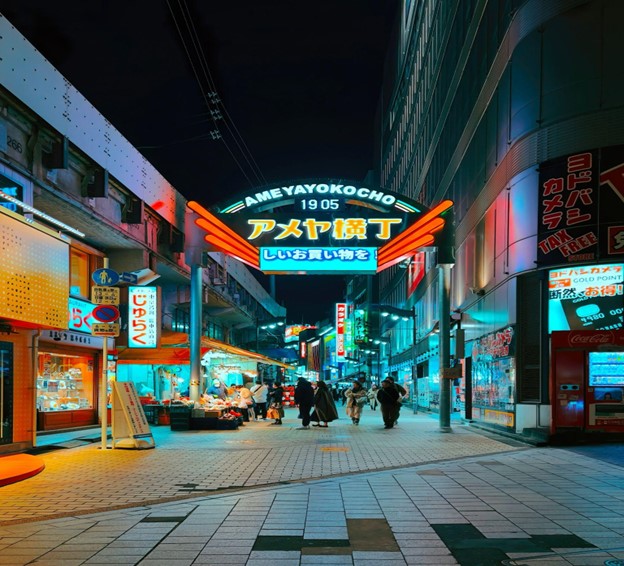
Ameyoko street
Following a good walk in Ueno Park, you can proceed to Ameyayokocho or Ameyoko street, as it is called. It is a busy street between Ueno and Okachimachi stations. There are food stalls, restaurants, and shopping stores nearby. It is a classic Japanese street with all kinds of stores and stalls.
Sensoji Temple
In close proximity to Ameyayokocho is the Sensoji temple. The temple is one of Tokyo’s most famous and colorful temples. It is a Buddhist temple located in Asakusa. It is not only the temple itself that is impressive but also the two gates that lead up to it (Kaminarimon and Hozomon), flanked by a market street (Nakamise).
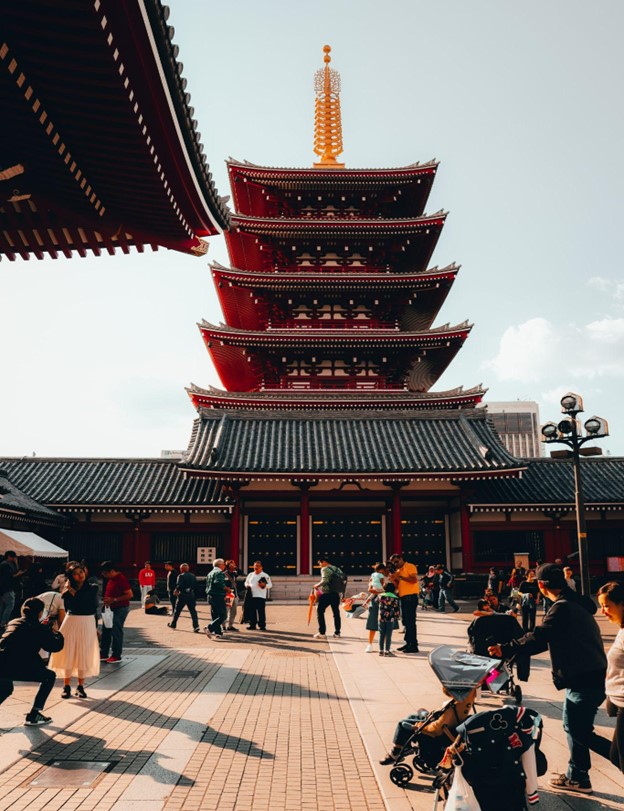
Tokyo Skytree
Tokyo Skytree is considered the tallest tower in the world, at 634 meters tall. The tower gives an incredible view of Japan. One of the main highlights of the Tokyo Skytree is the two observatory decks that provide spectacular views of the city. The two decks have 350 and 450 meters.
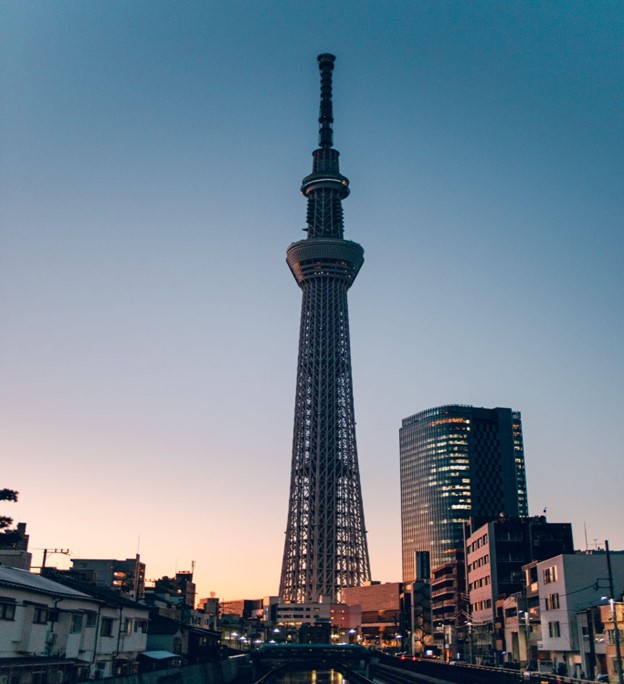
Tokyo Skytree
An evening dinner in the iconic Tokyo Skytree is the perfect way to end your first day of exploring Tokyo. There are a variety of dining options to choose from, including Japanese cuisine and international dishes. Remember to book your reservation in advance and enjoy the aerial views of the city while you dine. It’s the perfect way to end your first day in Tokyo!
Don’t forget to get your training in, by dropping in to CrossFit Otemachi.
Day 2:Modern Tokyo-West Side
The second day will be spent on the city’s west side. This part of Tokyo has plenty of lively neighborhoods, delicious street food, and trendy shopping districts. Discover Harajuku’s bustling streets and Shinjuku’s serene temples in this exciting part of Tokyo.
Harajuku
Aside from being a center for extreme teenage culture and fashion, Harajuku also offers shopping for adults and a place for some historical sites. The highlight point of Harajuku is the Takeshita Dori and its side street, which are home to many trendy shops, fashion boutiques, used clothing stores, crepe stands, and fast food outlets.
Meiji Jingu Shrine
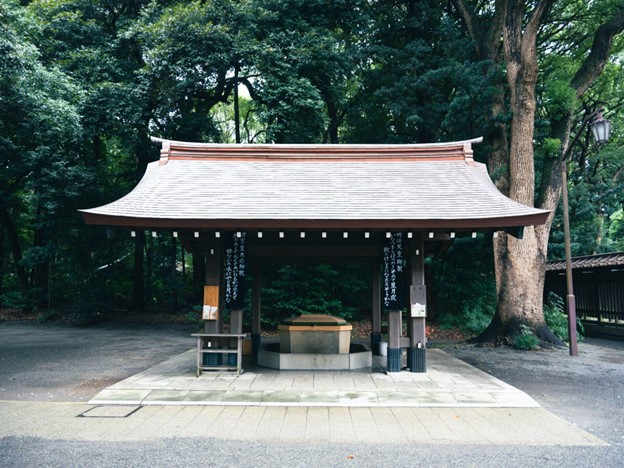
Meiji Jingu
You can then visit Meiji Jingu Shrine within Yoyogi Park. It is one of the most popular shrines in Japan. The path leading to the park’s main temple complex is lined with trees making it an instant shrine forest. You can take peaceful walks around the spacious grounds of the shrines, which are ideal for a relaxing stroll.
The main shrine buildings are about ten minutes from Harajuku Station’s southern entrance and Yoyogi Station’s northern entrance. A massive torii gate marks the entrance to the shrine grounds, which are immediately surrounded by a tranquil forest. Visitors can participate in typical Shinto activities, such as making offerings at the main hall, buying charms and amulets, or writing out one’s wish on an ema.
Nezu Museum
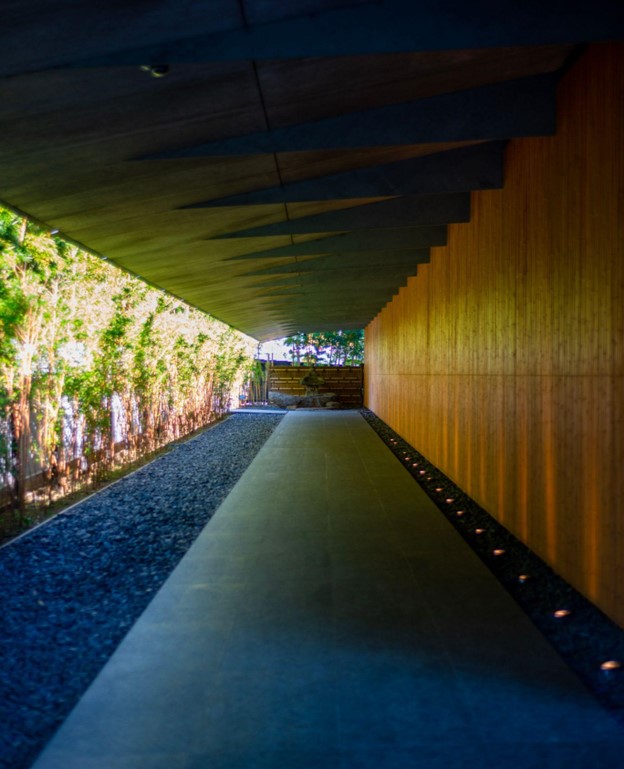
Nezu Museum
From the Meiji Jingu shrine, head to the Nezu Museum for a collection of Japanese and Asian premodern art. One of the highlights of the visit to the Nezu museum is a walk to its beautiful garden. Go out through the first-floor Garden Entrance or the ground-floor Teahouse Entrance and follow the stone-paved path into the trees. There you will find a teahouse, various stone lanterns, and other fascinating objects.
Tokyo Metropolitan Building
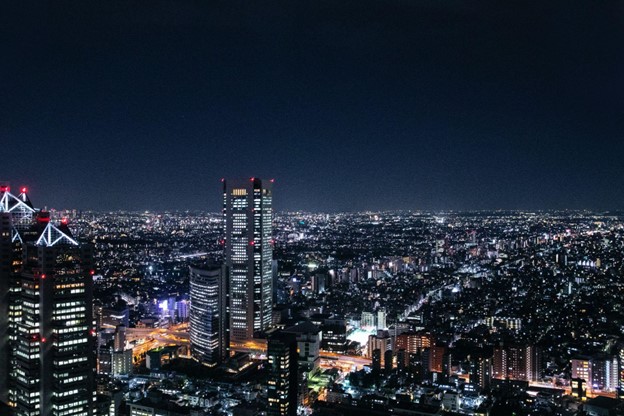
Tokyo Metropolitan Building
The Tokyo metropolitan building is a 10-minute walk from JR Shinjuku station. The place is often flocked by tourists for its free observation decks that provide panoramic views of Tokyo. It is Tokyo’s 5th tallest structure and has observation decks for each tower. A great time to visit is during sunset. From the observation decks, you can see different landmarks all over Tokyo, including Tokyo Skytree, Tokyo tower, Meiji-Jingu shrine, Yoyogi park, Tokyo Dome, and many more. You can glimpse Mount Fuji from the tower when the weather is fair.
Shibuya Crossing
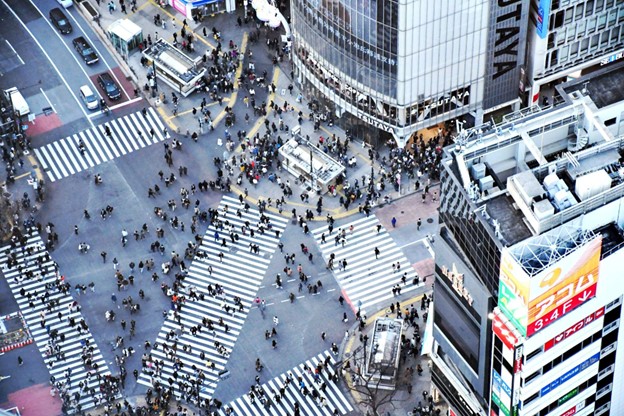
Shibuya Crossing
Next to visit is the famous Shibuya Crossing. You can reach it directly from the Hachiko exit of Shibuya station. During peak time, thousands of people cross the crossing per light. You can walk through the intersection yourself, make your way to a viewpoint, and get a snap of the bustling intersection. Take in the best views of Tokyo from this 360° open-air observation deck on the rooftop of Shibuya Scramble Square. This observatory is approximately 230 meters above ground level, making it the highest point in Shibuya.
Shibuya
Spend a good time exploring the Shibuya neighborhood, as the place has a lot of Instagrammable spots to take your photo, or if you love shopping, this place is ultimately a place for you to shop until you drop.

Shibuya
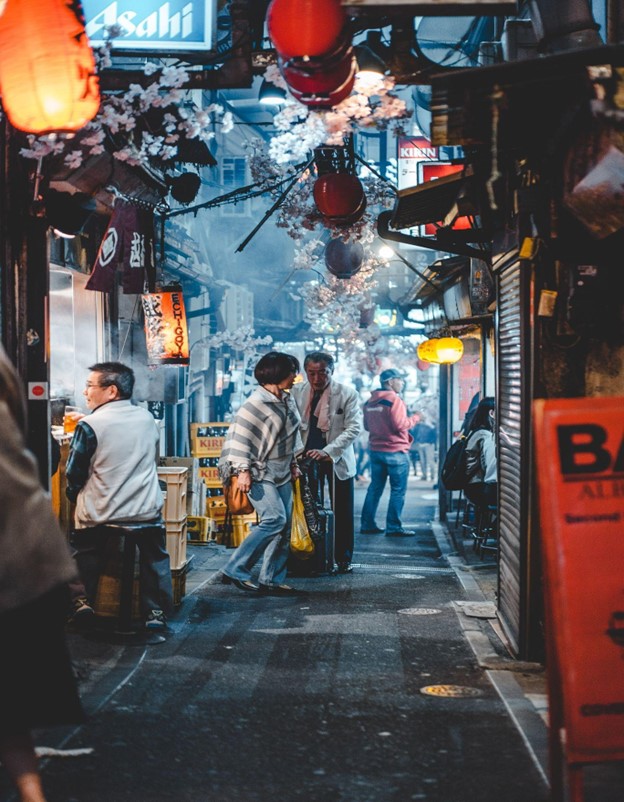
Spend at least a night or two walking its streets filled with bright lights, restaurants, and bars. The top places to visit are Piss Alley and Golden Gai. Piss Alley is a collection of restaurants, grilled chicken yakitori restaurants, and street food stalls. Visiting the place is like a trip down memory lane of old Japan. Golden Gai is a place that offers a taste of Japan’s past. This legendary district has narrow alleyways, hidden drinking establishments, and lively nightlife that have remained untouched by modernization.
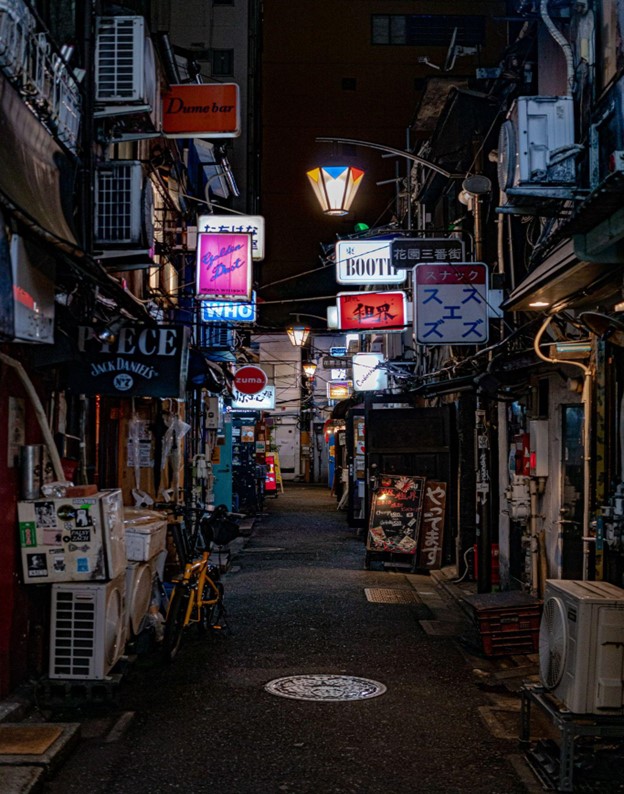
Akihabara
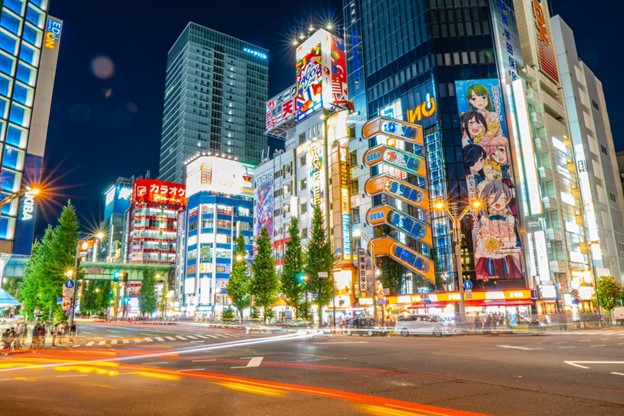
Akihabara (Unplash)
If you would like to end your day with a bang, you could head over to Akihabara, which is a district in downtown Tokyo that is famous for its many electronics stores, as well as the center of Japan’s otaku (diehard fan) culture. Aside from the numerous electronic stores you will find in the district, there are also several manga and anime institutions.
Day 3: Shibuya and Shinjuku
Day 3 in Tokyo will be spent in the vibrant and bustling neighborhoods of Shibuya and Shinjuku. With delicious food options, fantastic shopping finds, and a buzzing nightlife, these areas draw tourists worldwide.
Finding the Best Places to Eat, See, and Do in the Neighborhoods
Now that we’ve covered some of the best free activities, nature spots, shopping destinations, and nightlife hotspots in Tokyo, it’s time to search deeper into the heart of the area: the things to do, see and eat. Whether you’re a foodie looking for amazing Japanese cuisine or a sightseer seeking out iconic landmarks, Shibuya and Shinjuku have something for you.
Discovering Local Boutiques and Major Department Stores
For every taste and budget, you’ll find shops and stores in these bustling areas. Looking for luxury brands? Head to Ginza or check out the classic Mitsukoshi. Shibuya Station has everything you need if you’re more into youth fashion trends. If you’re looking for one-stop shopping, visit Seibu or Sogo, found at major thoroughfares like Shibuya Station. And don’t forget about the Isetan Shinjuku Department Store, which has an unusually large presence in Tokyo’s famous Shinjuku district. From fashion and beauty to housewares and electronics, these stores have everything you need to shop ’til you drop!
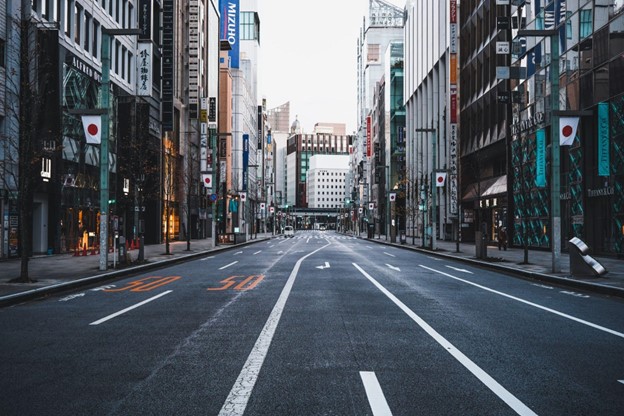
Nature: Finding Quiet Green Spaces and Outdoor Activities
Luckily, these neighborhoods offer plenty of quiet green spaces to escape the hustle and bustle. Enjoy Yoyogi Park’s serene pond and lush gardens, or stroll through Meiji Shrine’s expansive forested grounds for some peace and quiet.
If you’re looking for an active outdoor experience, check out Shinjuku Gyoen National Garden, where you can rent a bike and pedal through Japanese gardens, cherry blossom trees, and even a French rose garden.
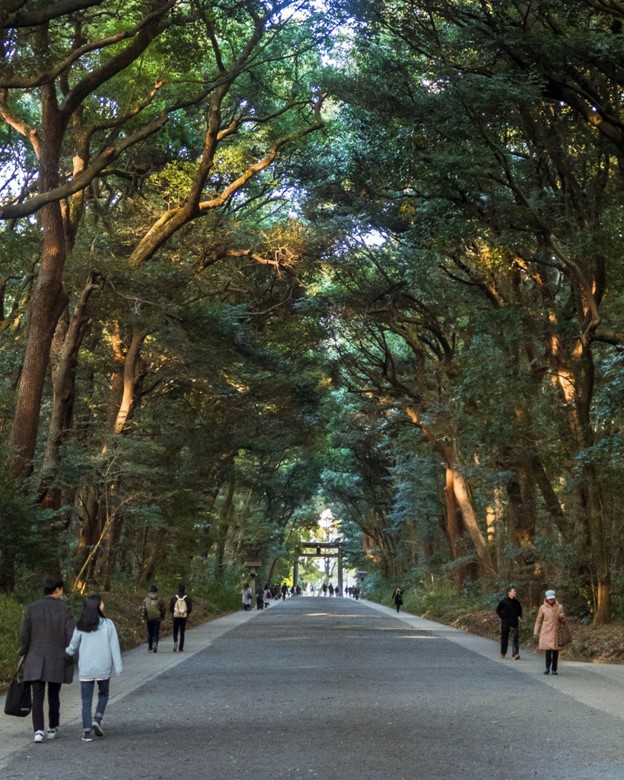
Nightlife: The Best Bars and Clubs in Shibuya and Shinjuku
The nightlife in Shibuya and Shinjuku is vibrant. You can find some great bars and clubs and dance the night away in the neighborhood. Take a stroll down the bustling streets of Shibuya, and you’ll find Spincoaster and other popular venues for live music and DJs. Head over to Shinjuku, and you’ll discover the iconic New York Bar at the Park Hyatt Hotel and the lively Warp Shinjuku.
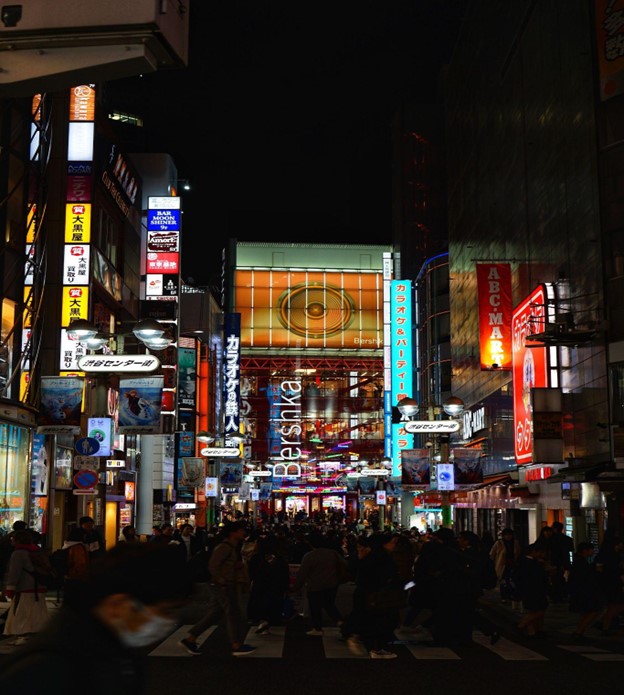
Nightlife options abound in these neighborhoods. Get a bite to eat at one of the many street food vendors, and keep the party going all night.
For your training, you can drop in to CrossFit Nihombashi. It is approximately a 1-minute walk from Exit 3 of Kayabacho Station on the Tokyo Metro Hibiya Line and Tozai Line
Day 4: A Day Trip to Kamakura
Kamakura is one of the popular day trips from Tokyo. It is a laid-back coastal town that is less than an hour south of Tokyo. Yet Kamakura offers so much more than just the beach, including temples, trekking, and the revered Great Buddha.
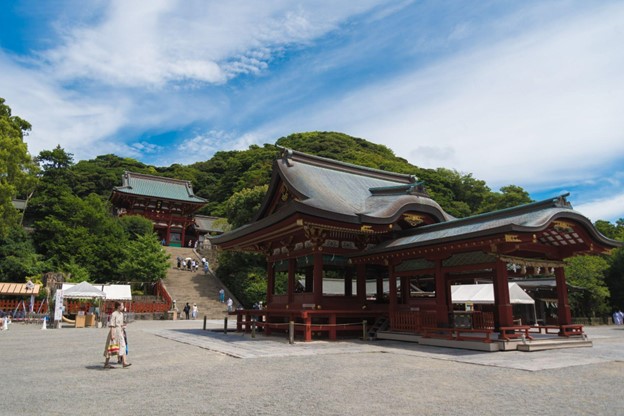
Kamakura
Kamakura is a small town where you can easily explore the center on foot, or if you want to be active, you can rent a bike. Its serene beaches, historic temples and shrines, and picturesque streets make it the perfect place to cycle around.
For more isolated locations, you can take a taxi or bus.
During your stay in the town, you may wish to store your bags in one of the coin lockers you will find nearby.
Remember, if you want to mix up your days in Tokyo a bit, you may easily change this day around. That shouldn’t be a problem for you as it’s just a day’s excursion.
The numerous trains that run in both directions throughout the day make it convenient to plan a day excursion. All you need to do is get to Tokyo or Shinjuku Station.
Top destinations to Kamakura include the following:
Great Buddha
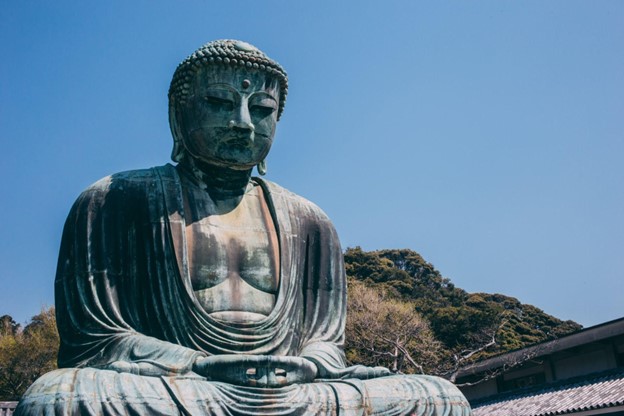
The Great Buddha
The Great Buddha is about 5-10 minutes from Hase Station, the third station from Kamakura on the Enoden railway. It is the second-tallest bronze Buddha statue in Japan.
Hokokuji Temple
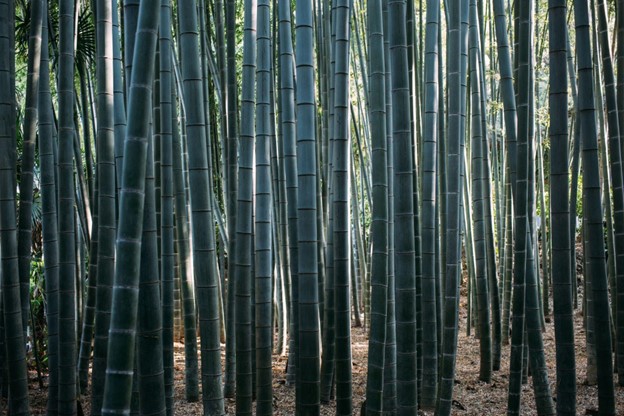
The Temple is most well-known for the lovely, tiny bamboo grove that can be found behind the main hall of the temple and is covered in more than 2000 stalks of dark green bamboo. A few winding paths through the bamboo lead to a tea house where, for a nominal fee, you can sit and take in views of the bamboo grove while sipping a cup of matcha tea. Hasedera Temple
Enoshima
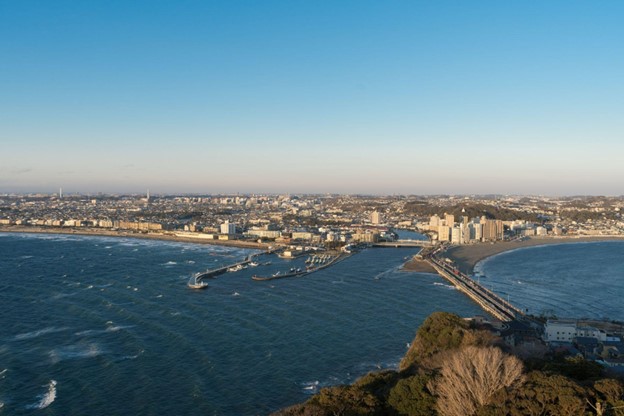
Enoshima
The island’s attractions include an observation tower, park, caves, and shrine. On days with good sight, one may see Mount Fuji.
Hiking Trails
Staying active while on vacation is not a problem in Kamakura. Kamakura is surrounded by ocean, and forested hills, making it ideal for stretching those muscles on and enjoying each trek that you take.
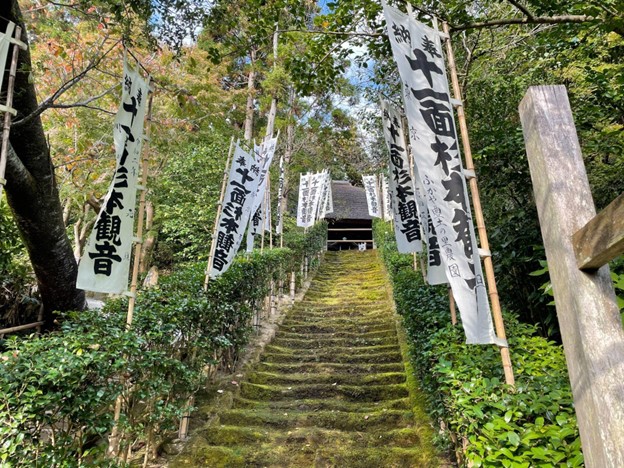
Kamakura
The hills are home to several evocative temples that are connected by lovely hiking trails that wind through the forest.
You may easily get from one Kamakura attraction to another by using the paths. Several of the paths are short, taking just 30 to 90 minutes to complete, and they allow tourists to take in both natural and cultural attractions.
Hachimagu Shrine
It is the most important shrine in Kamakura city. It is located at the center of Kamakura and is widely considered the city’s soul. You enter through the massive red Torri gates and find 2 ponds on both sides of the road. These ponds represent the Minamoto clan that founded the shrine.
Kenchoji Temple
The temple is part of the five-mountain system of Japanese Zen Buddhism. The temple ranks first among Kamakura’s Zen temples. It was established in 1253 and has been a major spiritual center in Japan.
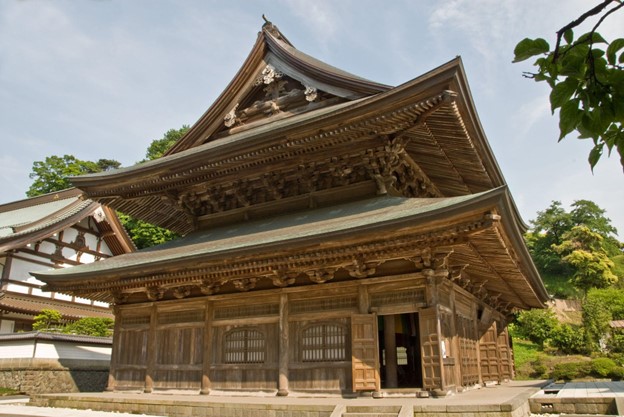
The temple is surrounded by beautiful gardens with colorful flowers and lotus ponds. It also offers lectures, meditation, and prayer sessions, among other activities.
Various cultural events occur in the temple yearly, including traditional Japanese festivals and ceremonies. So if you choose to explore Buddhism or simply appreciate nature at Kenchoji Temple, you will surely have an unforgettable experience.
Meigetsuin Temple
Meigetsuin Temple, also called Hydrangea Temple, is one of Japan’s most popular temples. Various hydrangeas bloom at the temple during the summer, making it the perfect place to view seasonal blooms.
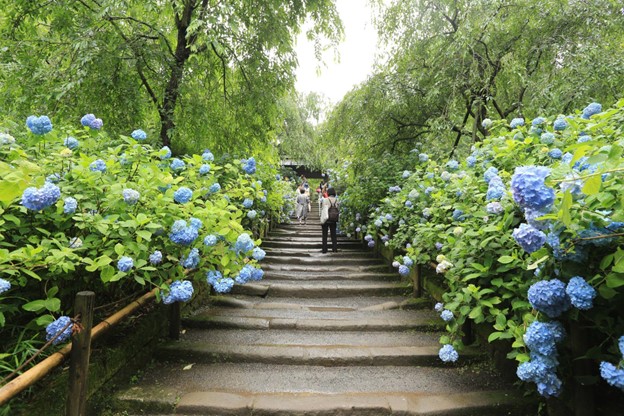
Meigetsuin Temple Wikimedia
The temple contains many statues and artifacts depicting the history of Japan and Buddhism. Some events and activities are held at the temple throughout the year, including traditional festivals and tea ceremonies.
The temple is also popular for hikers exploring its beautiful gardens and grounds and learning about Japanese history and culture.
Beaches

Kamaura Beach
Kamakura is home to stunning beaches where you can enjoy sunbathing, swimming, beach volleyball, and surfing. Two of the most popular beaches of Kamakura are Yuigahama and Zaimokuza because of their convenient location and astounding facilities.
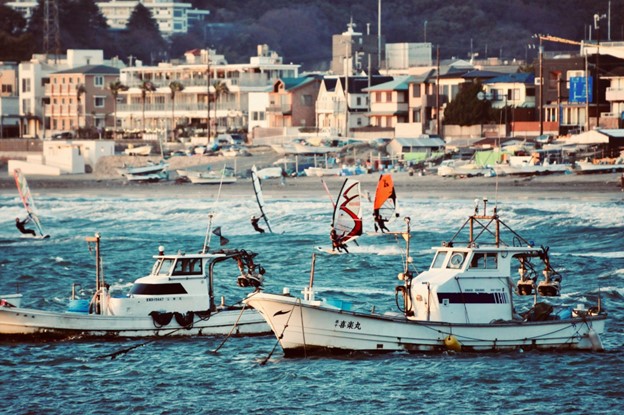
Zaimakuza Beach
Together, the two beaches cover about one kilometer of coastline, providing plenty of space for swimming and sunbathing. There are beach huts open during the summer, where visitors can find shade, changing and shower facilities, as well as food and beverages.
Kamakura Komachi Dori Street
Kamakura-Komachi Dori Street brings a sense of modernity to the ancient city of Kamakura, where you will find trendy boutiques, traditional Japanese goods, souvenirs, and snacks to take home. It is strategically located in the city’s center.
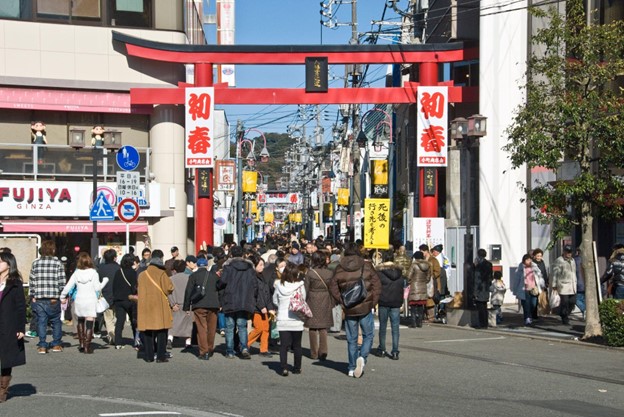
Komachi Street Wikimedia
Before returning to Tokyo, you can dine at one of the many restaurants and cafes serving Japanese and international fare.
Day 5: A Day Trip to Hakone
Spend your fifth day exploring the beautiful town of Hakone. There is much more to see and do in this small town. A visit to this region will be filled with hot springs, onsens, breathtaking hikes, and luxurious resorts. Hakone is a great place for relaxation and rejuvenation.
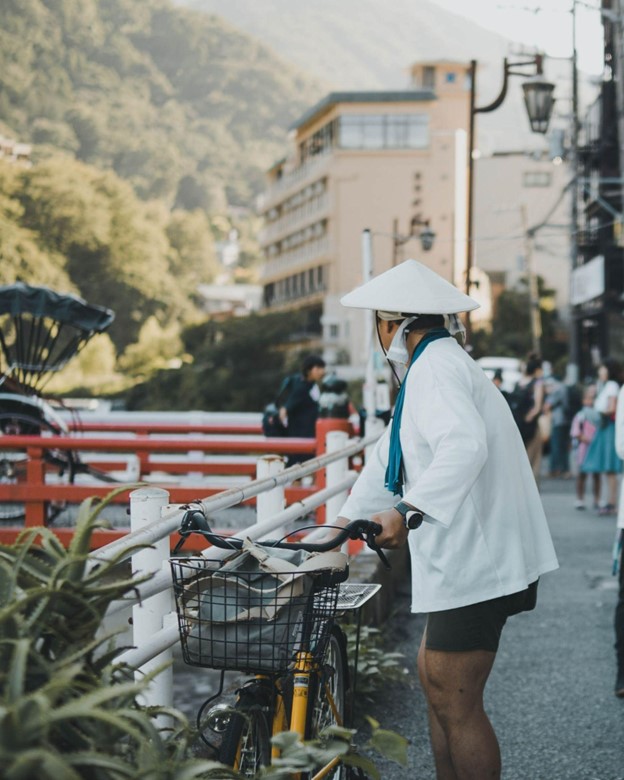
Hakone
Hakone loop, or the Hakone round course, is the best way to experience Hakone. The Hakone Loop is an impressive and picturesque train route that loops through the Hakone hot springs region of Kanagawa Prefecture, Japan. Three lines comprise the loop: the Odakyu Romancecar, the Hakone Tozan Line, and the Hakone Tozan Cable Car. In addition to passing through stunning forests and mountain valleys, the route crosses the iconic Lake Ashinoko, forming an incredibly scenic route. You can also take a glimpse of Mount Fuji along the way.
The Hakone Loop is a great way to experience Japan’s culture, traditional architecture, and natural beauty. This unique region will surely leave you with beautiful memories, regardless of whether you choose to take in the sights from the train or explore it on foot.
The following are the top attractions in Hakone:
Hakone Hot Springs
Hot springs are a popular attraction in Hakone, Japan. Hakone’s most famous hot spring is Yumoto because of its high-quality water and myriad inns and bathhouses.
Several public bath houses and ryokans offer hot spring baths. Several of these ryokans offer their baths to visitors for an admission fee during the day. Free use of the baths is available to staying guests.
Open Air Museum
Hakone Open Air Museum displays sculptures on its grounds and views of the nearby valley and mountains to achieve a harmonious balance between nature and art.
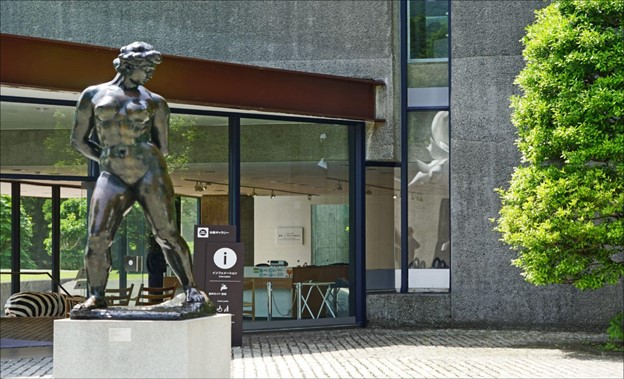
The Picasso Pavilion is a must-see for any art enthusiast visiting Japan. Approximately 300 works by Spanish artist Pablo Picasso are on display in this exclusive exhibition space. This collection includes paintings, sculptures, and ceramic works. It is the perfect environment to enjoy the artwork on display due to the tranquil and calming atmosphere. Additionally, the museum has several indoor and outdoor exhibitions, as well as a restaurant, a shop, and a footbath.
Lake Ashinoko
Lake Ashinkpo is located in Mount Hakone’s caldera. The lake has three excellent viewing spots: Moto-Hakone (a few steps south of the sightseeing boat pier), the Hakone Detached Palace Garden, and the sightseeing boats cruising the lake.
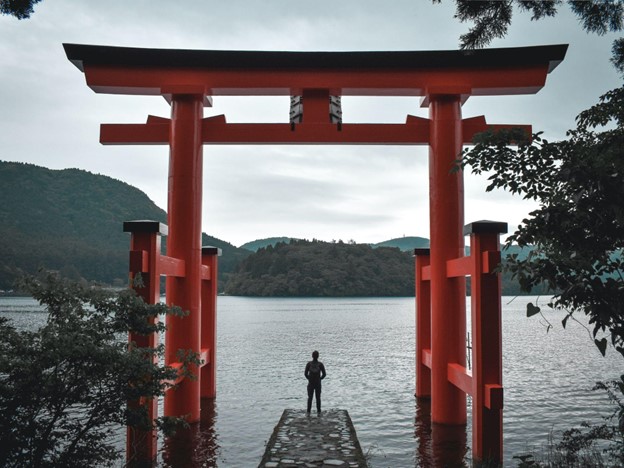
Lake Ashinoko
There is no doubt that Mount Fuji is a beautiful sight to see, but it should be noted that clouds and poor visibility can sometimes hinder your ability to see the mountain as clearly as if it were a perfectly clear day. In the colder seasons of the year, the visibility tends to be better than in the summer and in the early morning and late afternoon hours of the day when it is relatively clear.
After completing the Hakone day trip, you’ll head next to Kanazawa.
Day 6: Kanazawa
Visiting Kanazawa on your day 6 is an ideal way to experience Japan’s rich cultural heritage. You can easily access many of the city’s attractions from Kanazawa Station. Kanazawa offers a combination of modern luxuries and rich historic sites, making it a fascinating destination for travelers interested in Japan’s culture.
Kenrokuen Garden
Your top destination is the Kenrokuen Garden, which is undoubtedly one of Japan’s most breathtakingly beautiful gardens. Take a bus from Kanazawa station to the park. Visitors can still see the ruins of Kanazawa Castle within the grounds, as the garden was once part of the castle. One can spend hours exploring the Kotoji-toro Lantern and the famous Kaisenden Hall in this expansive garden. If you want to benefit from the free admission, make sure you visit before 9 a.m.
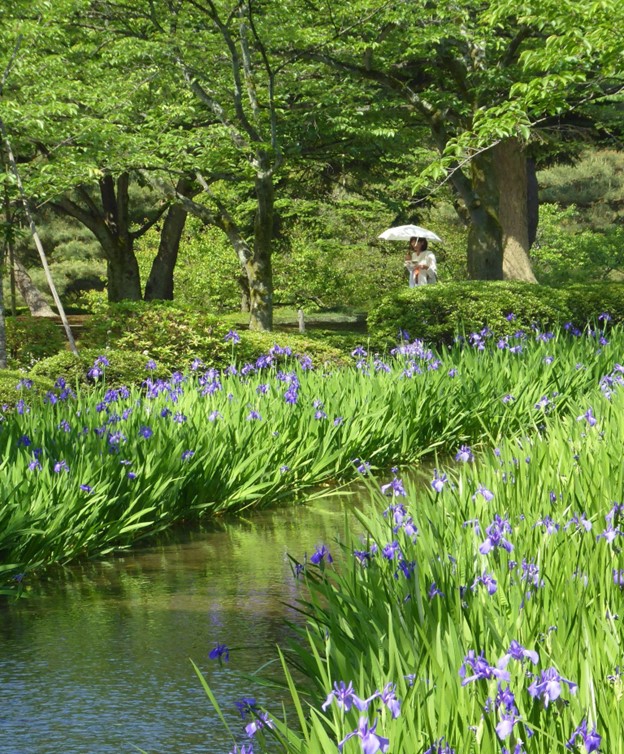
Kanazawa Castle Park: A Historic Attraction of the City
The Kanazawa Castle park is a popular tourist attraction in the city that was built in the 1500s and was a significant site for the Maeda family that ruled over Kaga Domain.
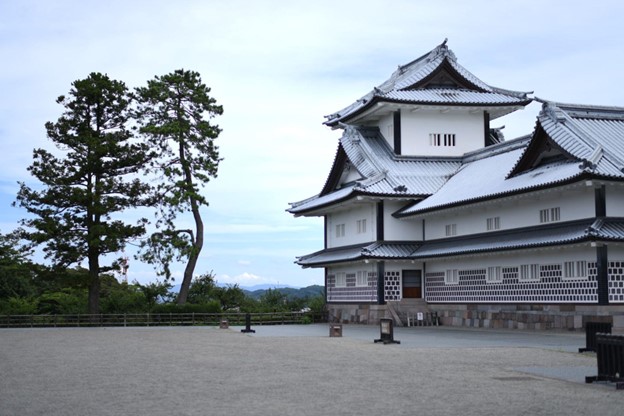
Kanazawa Castle Park
Throughout history, this stunning castle was burned down several times, becoming a military barracks, tennis courts, and a university campus in modern times. Currently, the castle is one of the most indelible symbols of Kanazawa city, and its history dates back centuries. It is free to walk around the castle grounds, but you will need to buy a ticket if you wish to see the inside of the castle buildings, and that is where you will enjoy the views from the castle windows.
Oyama Shrine
After experiencing Kanazawa Castle Park, head over to Oyama shrine, a Shinto shrine that was built in 1599. The shrine is known for its unusual gate designed by a Dutch architect, which is a real example of Japanese craftsmanship. Upon entering the shrine, visitors can easily sense the historical significance of the shrine as they walk through the halls, paying homage to the former feudal lord who built the shrine. Also, there is a nice strolling garden at the palace, with ponds and bridges designed to look like harps and lutes, which visitors can enjoy.
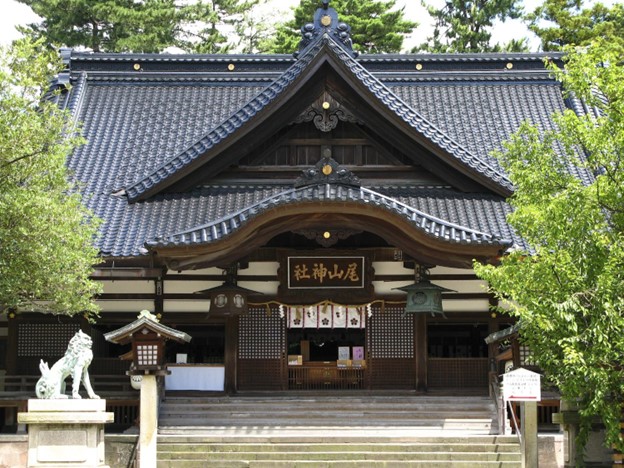
Oyama Shrine Wikimedia
Day 7: Shirakawa-go
Located in central Japan, Shirakawa-go is a small county side known for its traditional houses with steep, thatched roofs surrounded by lush landscapes. This UNESCO World Heritage Site is breathtaking, serene, and charming.
Getting here is as easy as going to the Nohi bus website and entering your travel dates. From Kanazawa train station, take the bus, and you’ll be on your way in no time.
Shirakawa-go viewpoint
Shiroyama viewpoint offers breathtaking views of the picturesque Ogimachi Village. Located north of the village center, visitors can easily reach the viewpoint by taking the bus, which frequently departs from nearby cities. It’s a perfect spot to admire the pristine beauty of the village and take photographs. Be sure to load up on cash before visiting, as the area has limited ATMs.
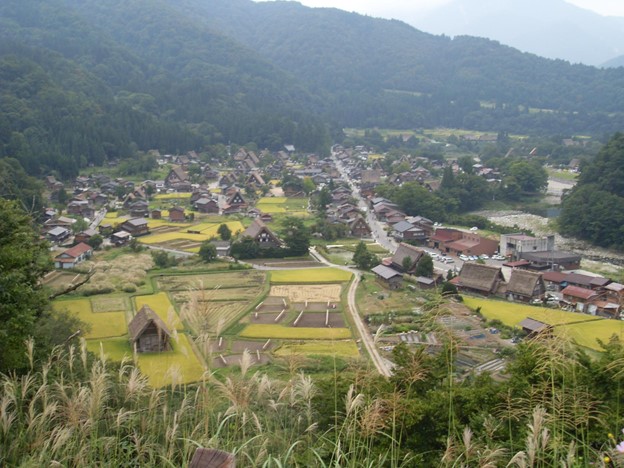
Shirakawa-go Wikimedia
Wada and Kanda Houses
As you wander through Shirakawa-go, it’s impossible not to appreciate the traditional houses that make this village so unique. These houses are called gassho-zukuri and are the trademark of Shirakawa-go’s architecture. With their steep thatched roofs, which resemble hands joined in prayer, they were built to withstand heavy snowfall during the winter months. Visitors can explore some of these traditional farmhouses, some of which have been turned into museums and restaurants, allowing you to experience the history and culture of the region up close. Make sure to visit Wada House, the largest gassho-style house in Shirakawa-go, and Kanda House, which showcases the life of a 19th-century farming family. Admiring traditional houses is an essential part of any visit to Shirakawa-go.
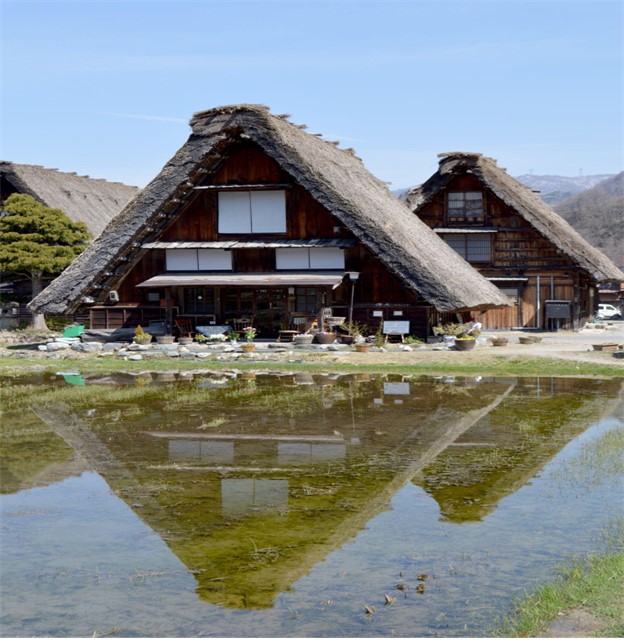
Shokawa River
Don’t miss the stunning Shokawa River when you visit Shirakawa-go. You can see the river from the Tenshukaku Observatory or cross the suspension bridge to get a closer look. Shirakawa-go No Yu natural hot springs nearby are also a great place for relaxing. It connects two gassho-zukuri farmhouses in Shirakawa-go and Gokayama, which share a common heritage. The river, along with the unique architecture, makes Shirakawa-go a must-visit destination in Japan.
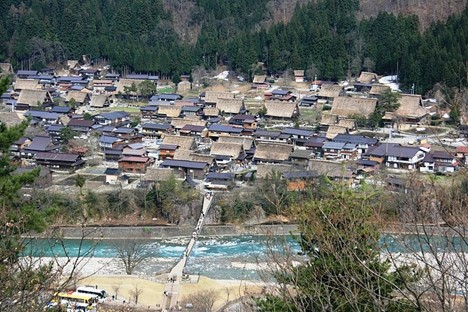
Shokawa River Wikimedia
Culinary Scene in Shirakawa-go
Shirakawa go’s culinary scene is part of what makes the place so beautiful and worth your visit. From buckwheat soba noodles to tofu dishes and seasonal vegetables, there are plenty of mouth-watering dishes to choose from. Among the local delicacies is Hida beef, a tender, flavorful meat. You can also choose from various drinks, including sake and pure spring water beverages. In addition to using fresh edible wildflowers and herbs, the dishes are authentic and beautifully presented.
Day 8: Takayama
On day 8, you will spend the day exploring Takayama city. The charming town of Takayama is a city in the mountainous Hida region and is bound to capture your heart. The city offers a rural feel with great architecture and scenic streets.
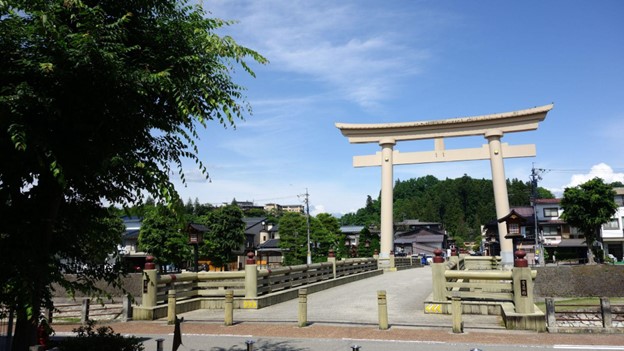
Takayama
The charming streets of this picturesque mountain town are lined with traditional wooden houses, the local cuisine is delicious and breathtaking scenery.
The city of Takayama is also ideal for walking around. The other option here is to rent a bicycle if you do not like walking a lot and you want to be active.
Below are some places to visit when having a day in Takayama:
Morning Markets
You can reach the morning markets in 10 minutes from the JR Takayama station. Takayama holds two-morning markets between 7:00 and noon. These are the Miyagawa market along the Miya river and the Jinja-mae market in front of Takayama Jinya. The stands sell local crafts, snacks, vegetables, pickles, and flowers. The markets are typically pleasant places, with tourists and locals alike buying goods and talking to one another as they saunter from stall to stall.
Kusakabe and Yoshijima Heritage Houses
After exploring the bustling morning markets in Miyaga and Jinja-mae, head over to the Kusakabe and Yoshijima heritage houses next to one another. The Kusakabe was a merchant home showcasing the Hida region’s exquisite architecture. You can explore the interior to learn about the lives of wealthy merchant families in the past. Yoshijima heritage house is a stunning residence once owned by a wealthy sake brewer. The house offers a fascinating glimpse into the lives of the Japanese elite over a century ago. The intricate design and serene setting make it a popular attraction for visitors.
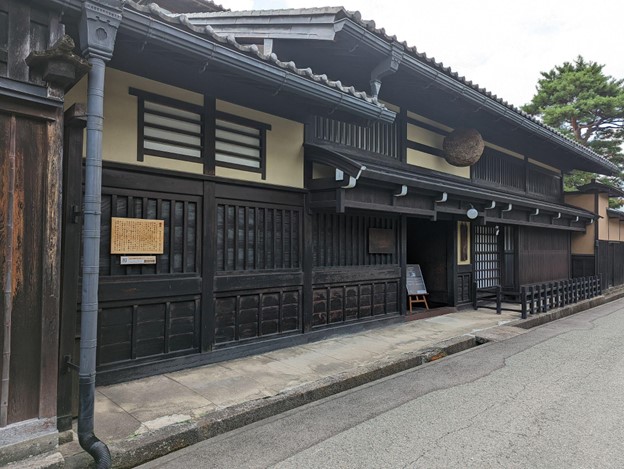
Yoshijima heritage house Wikimedia creative commons attribution 4.0
Sakurayama Hachimangu Shrine
Located just a short walk from the station, this peaceful Shinto temple offers a welcome respite from Takayama City’s concrete jungle. During the Takayama Matsuri festival season, up to one million people visit the shrine. To give visitors a taste of the festival all year round, 11 shrine floats are displayed at the Takayama Festival Yatai Hall in Sakurayama Hachimangu Shrine.
Sanmachi Old Town
As your day continues in Takayama, you cannot miss strolling through Sanmachi Old Town. With unique stores, restaurants, and galleries, this charming district presents a glimpse into the town’s traditional past. Walking through the narrow streets, visitors feel transported back to the Edo period with its old-world charm. The preserved merchant houses and sake breweries are the perfect backdrop for selfies and picturesque moments. For those curious about the district’s history, the Hida Takayama Town Museum is the perfect place to visit, housed in one of the oldest buildings in Sanmachi. With much to see and experience, Sanmachi Old Town is a must-visit destination in Takayama.
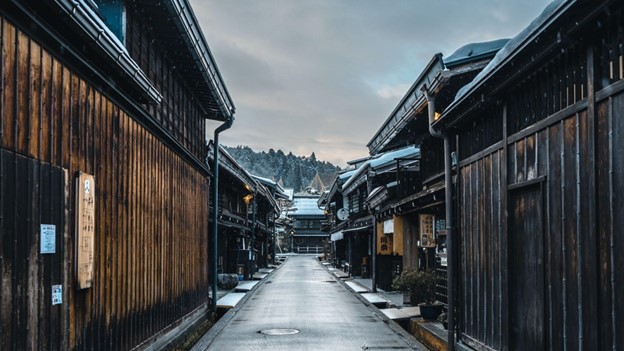
Sake Breweries
After exploring the charming Sanmachi Old Town, you should not miss out on the opportunity to visit the sake breweries. Takayama boasts several quality sake breweries thanks to its ideal climate for brewing sake. Visitors can warm their cockles while enjoying sake tasting at eight different breweries, which open their brewing facilities for a period of one week in turn. One of the oldest sake breweries in the Hida region, Tenryo Sake Brewery offers an authentic sake-tasting experience. You can witness the step-by-step process of making sake at Harada Sake Brewery and even try your hand at it. With clean water and a good environment, Takayama creates a perfect condition for local brewers to start up their businesses.
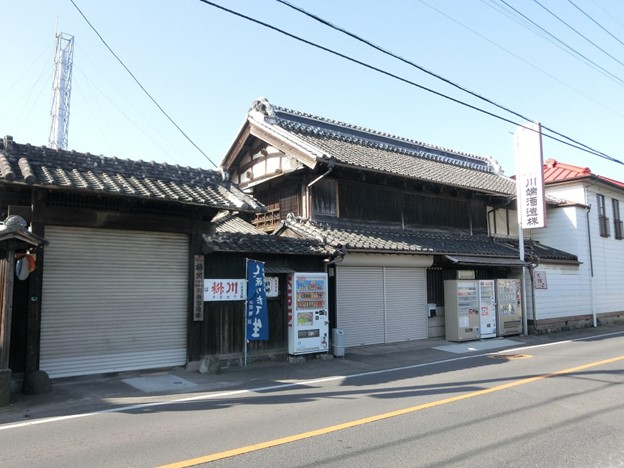
Hida Folk Village
This unique open-air museum is home to over 30 traditional Edo Period buildings from the Hida region of Japan, including gassho-zukuri houses. Set among the foothills and surrounded by forest, it’s easy to imagine this as a living village. Visitors can choose between a wheelchair-accessible 15-minute route or a longer walk to fully enjoy the picturesque surroundings. This is an essential place to visit when in Takayama to learn about Japan’s traditional ways of life.
Your journey to this beautiful town will not be complete without a flavorful encounter with their highly esteemed Hida beef. Sakaguchiya serves the best Hida beef sushi in Takayama.
After a day of adventure in Takayama, it’s time to go to your next destination, Kyoto.
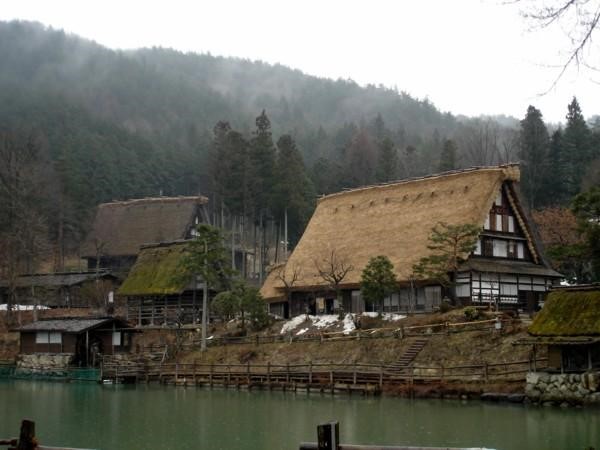
Day 9-11: Kyoto
For those looking to explore the beautiful city of Kyoto, a 3-day itinerary is a perfect way to experience everything it offers. Kyoto is the cultural heart of Japan that has something for everyone. It offers an unparalleled glimpse into Japanese culture and heritage, from traditional temples and shrines to gardens and geishas. The city is full of historical charm, making it the perfect destination for those interested in exploring ancient architecture and hidden natural gems.
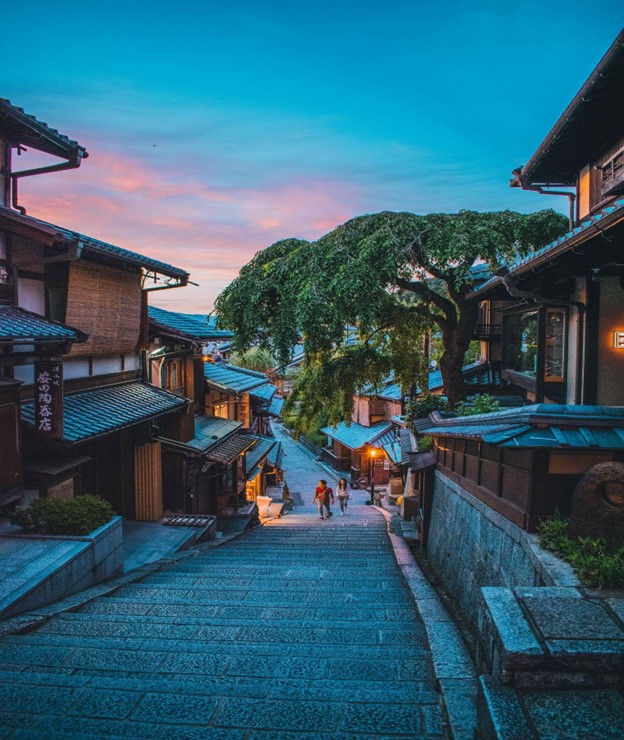
Day 9: Higashiyama and Gion District
Visiting Higashiyama and Gion District is a great way to explore the heart of Kyoto’s history and culture. In Higashiyama, you can glimpse old-time Japan as you explore narrow streets lined with traditional wooden buildings and machiya, traditional merchants’ townhouses. Here, you can visit some of Kyoto’s most iconic temples, such as Kiyomizudera and Yasaka Shrine, or explore the shops and restaurants that line the main street.
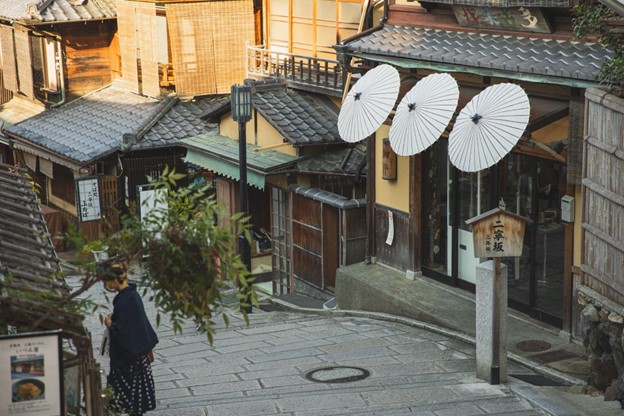
Higashiyama Pexels
Gion, meanwhile, is home to some of Kyoto’s finest geisha houses and teahouses. Stroll through its winding streets lined with wooden structures, and you’ll have the chance to see Japan’s traditional entertainment culture up close. There are also plenty of souvenir shops in Gion if you want something to take home with you. Both Higashiyama and Gion offer an unforgettable glimpse into traditional Japan, so be sure to make time to visit them while exploring Kyoto.
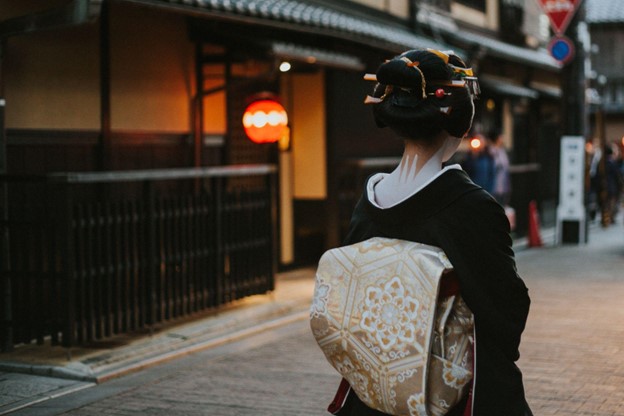
Kiyomizudera Temple
It is one of the most popular temples in Japan. It was listed on the UNESCO World Heritage sites in 1994. From the temple, you can get an amazing view of Kyto. The 3 story pagoda is the iconic temple building it can be seen from the center of Kyoto.
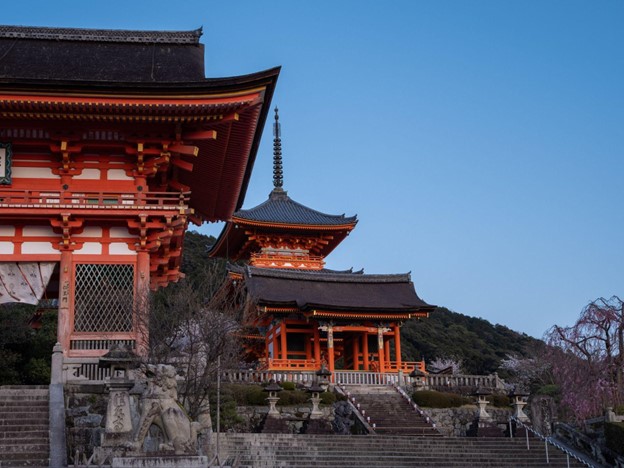
Kiyomizudera Temple
Yasaka Shrine
The shrine serves as a spiritual sanctuary and a popular tourist destination. The shrine is located between Higashiyama and Gion districts. It stands out among Kyoto’s many historic shrines due to its bright red color.

Yasaka Shrine
During the month of July, Yasaka Shrine celebrates a summer festival called Gion Matsuri, which is considered the most famous festival in the country. Around early April, the shrine also becomes crowded because Maruyama Park is one of Kyoto’s most famous cherry blossom spots.
Kenninji Temple
One of the must-visit attractions in Kyoto is the Kenninji temple, which is the oldest Zen temple in the city. The temple is located at the center of the Gion area.
The temple’s main hall is adorned with stunning artwork and a vibrant dragon painted on the ceiling. A tranquil meditation chamber is another highlight of the temple, where you can relax and practice mindfulness.
Many cultural events, such as flower arrangements, tea ceremonies, and calligraphy, are organized here yearly. The main hall is also worth visiting with its intricate decorations and beautiful sculptures.
A trip to Kenninji temple is a must-do activity if you are interested in Japanese culture and history or if you seek a peaceful escape from the hustle and bustle of the city.
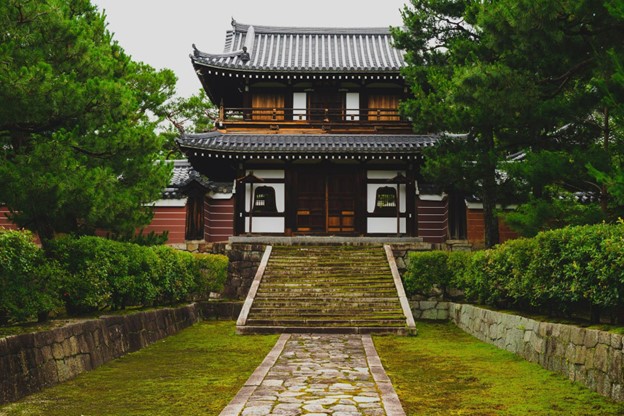
Nijo Castle
Nijo Castle is a must-see attraction for fans of Japanese culture. A UNESCO world heritage site, the palace was built in 1603, serving as a second home for the Tokugawa shogun. The castle’s fascinating past can be explored with a private guide. Admission is available from 8.45 am to 5 pm, with the last entry one hour before closing. Nijo Castle offers a glimpse into Japan’s past thanks to its elaborately decorated Ninomaru Palace and meticulously maintained gardens.
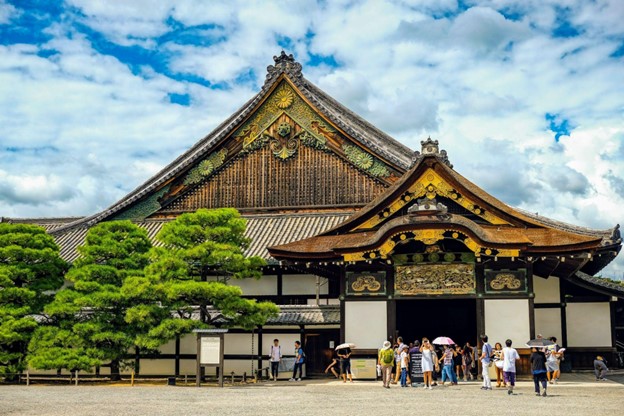
Most Famous Kyoto Fire Ramen
For those looking to experience the fiery goodness of fire ramen in Kyoto’s charming Gion district, Menbaka is the place to be. Located just a short 10-minute walk away from Nijo Castle, Menbaka offers a unique dining experience with its signature bowl of ramen set ablaze right before your eyes. Visitors can easily spot the restaurant with the image of the flaming ramen bowl at its doorstep.
And for those looking to explore more ramen options in Gion, Ramen Muraji comes highly recommended by locals. Tucked away on a small street, this hidden gem serves up a delicious bowl of Hakata-style Tonkotsu ramen that is definitely worth the wait.
Get your training in by dropping in to CrossFit Shohaku. Be sure to fill out a form on their website before visiting.
Day 10: Golden Pavilion and Arashiyama
On the second day of exploring Kyoto, visiting the Golden Pavilion of Kinkakuji temple and Arashiyama is a must.
Kinkakuji Temple
The Kyoto station bus is the easiest and cheapest way to get to Kinkakuji temple. Take the Kyoto city bus #205 that departs from stand B3 or #101 from stand B2. The travel from the station to the temple is around 40 minutes.
This Zen temple overlooks a serene pond and boasts a stunning three-story gold-leaf covered pavilion. It is one of the 17 world heritage sites in Kyoto. After enjoying the beauty of the Golden Pavilion, visitors can explore the nearby tea garden and Fudo Hall.
Enjoy a half-day trip to Arashiyama after viewing Kinkakuji (Golden Pavilion).
Arashimaya
The best way to get to Arashimaya from Golden Pavilion is to travel by bus. There is a bus stop located near the pavilion that serves multiple lines. The closest one that goes directly to Arashimaya is number 101, which takes about 15 minutes for the full journey. Additionally, other buses go to nearby stations, which can then be used to get to Arashimaya, such as the number 102, which goes to Nijo Station. From there, you can take the subway line and get off at the “Arashimaya” stop. The journey should last around 30 minutes in total if this is your chosen route.
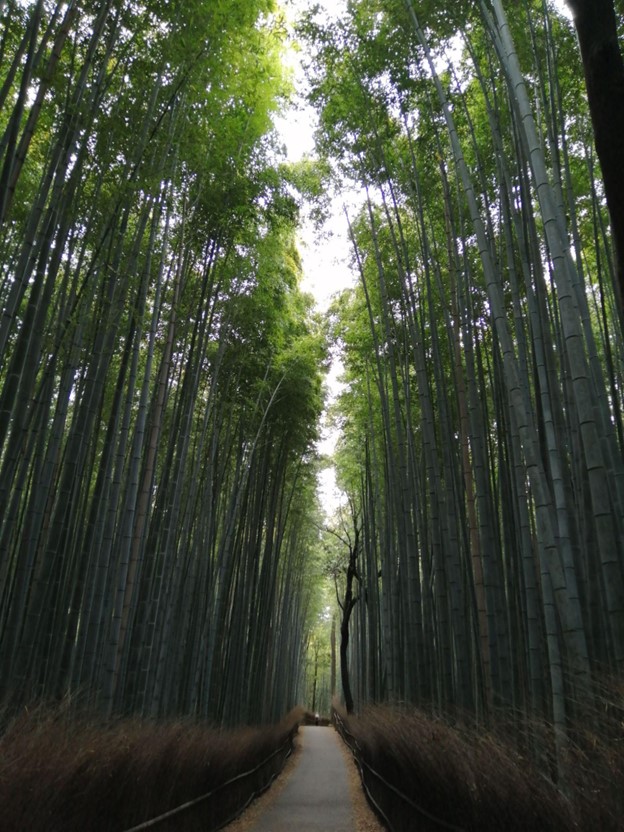
Arashimaya Forest Pexels
It is best to visit Arashimaya in the months of March to April for cherry blossoms and November fall foliage in Kyoto. The best about Arashimaya is all attractions are pretty accessible by walking. Start your tour by visiting the famous Bamboo Forest of Arashiyama, where you can admire the iconic towering bamboo shoots.
Togetsukyo Bridge
With its stunning views of the Katsura River and the surrounding countryside, it is one of Kyoto’s most iconic landmarks. The bridge is steeped in history, originally built in 836 and then rebuilt in 1934. It is a 155-meter bridge across the Katsura river. Strolling across this bridge gives a beautiful view of the river below and the surrounding mountains.
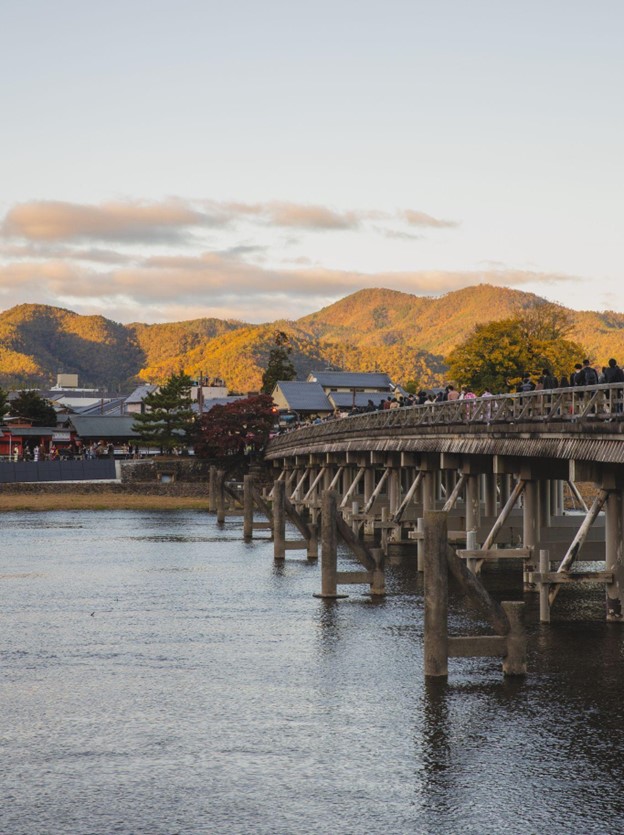
Togetsukyo Bridge Pexels
Tenryuji Temple
Visiting Tenryuji temple to enjoy its beauty is a must-do activity when visiting Kyoto. The temple was founded in 1339 by the powerful Shogun Ashikaga Takauji and is considered one of Japan’s five great Zen temples.
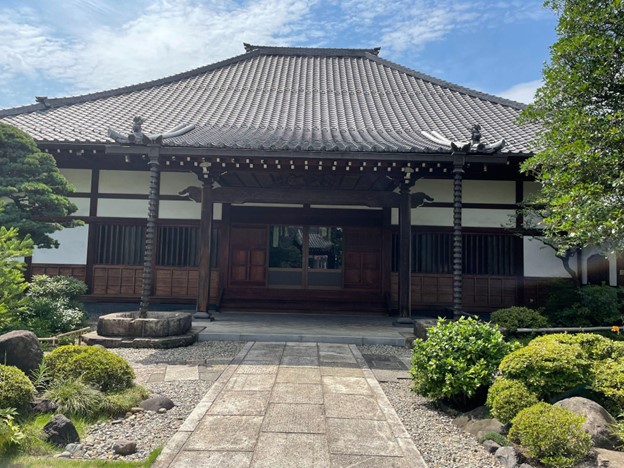
Tenryuji Wikimedia
Its landscape garden, which has been designated as a UNESCO World Heritage Site, is renowned for its precise design and beautiful foliage. The gardens are especially impressive during the cherry blossom season when the grounds are filled with beautiful pink flowers. The temple also features a variety of buildings and structures, including a five-storied pagoda and a large hall dedicated to Amida Buddha. Tenryuji is also home to one of Japan’s oldest teahouses, where visitors can enjoy traditional Japanese tea ceremonies.
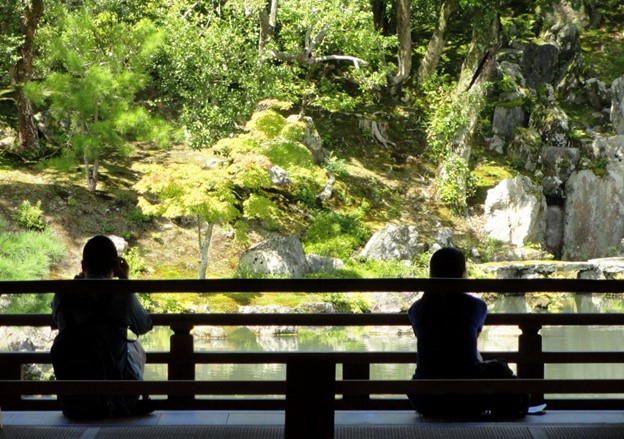
Tenryuji Garden Wikimedia
You can also visit restaurants near the temple and taste Kyoto’s specialty, Yudafu.
For a unique culinary experience in Kyoto, try one of the Yudofu restaurants near Tenryuji Temple. One such restaurant that stands out is Yudofu Sagano. A nice bonus is an English-speaking staff at the restaurant, which makes ordering a breeze. You will surely enjoy the taste of these chunks of tofu simmered in the broth!
A popular activity to do in Arashiyama is to take a rickshaw ride through the forested hills and along the beautiful streets that line the edge of town. The rickshaws are typically pulled by an enthusiastic driver, and some offer tea or snacks on the ride.
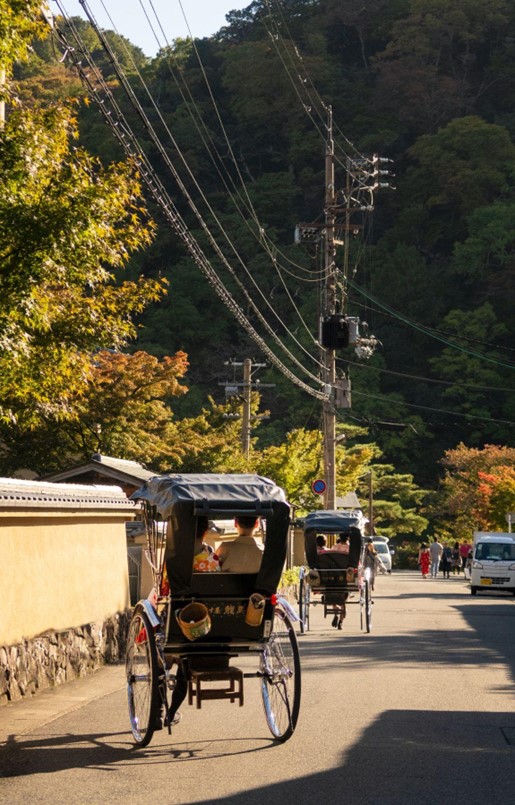
Rickshaw Ride Wikimedia
Head back to the center of Kyoto before the day ends and prepare for your last day in Kyoto.
Day 11: Central Kyoto
Your last day in Kyoto will be going to be a jam-packed trip to central Kyoto. The city is packed with ancient temples, shrines, and gardens that display the rich history of Japan. The area is great for getting lost in the winding cobblestone streets and exploring its picturesque buildings, traditional merchants, and quaint restaurants.
Fushimi Inari Shrine
The Fushimi Inari Shrine is a must-see destination. A visit to this shrine will offer a magnificent view of a tunnel made up of thousands of iconic red torii gates. The shrine is located just outside JR Inari Station and is easily accessible by taking a train along the JR Nara Line. Upon arrival, you can hike through the gates to the top of the mountain and enjoy the beautiful scenery along the way.
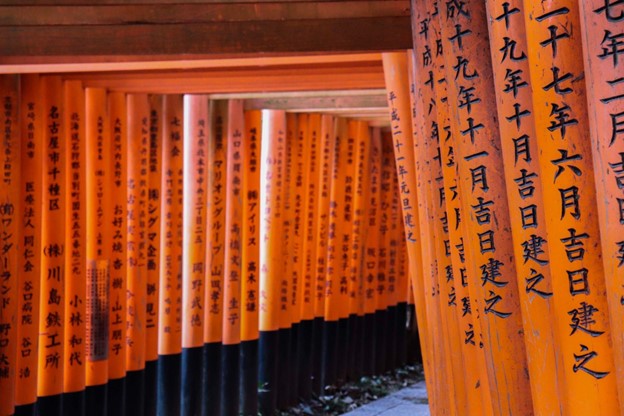
While hiking, one may encounter shops selling souvenirs, snacks, and drinks. Visiting the shrine at any time of the day is free, as the gates are open 24/7. However, the shrine is often crowded throughout the year, with over 2.7 million people visiting during the New Year period alone. Therefore, the best time to visit would be during weekdays or early in the morning to avoid crowds. Overall, visiting the Fushimi Inari Shrine is a unique and unforgettable experience.
Toji Temple
As one of Japan’s UNESCO World Heritage Sites, the Toji temple showcases traditional Japanese architecture and art. Visitors can marvel at the tallest wooden pagoda in Japan and several Buddhist statues and artifacts housed in the Homotsukan Museum. For those interested in local culture, the Kobosan Flea Market, held every 21st of the month, is a must-visit.
The temple is conveniently located within walking distance of Kyoto Station, making it easily accessible for tourists. From the beautiful cherry blossom illumination in spring to the serene garden and elegant halls, Toji temple offers a truly immersive experience for all visitors.
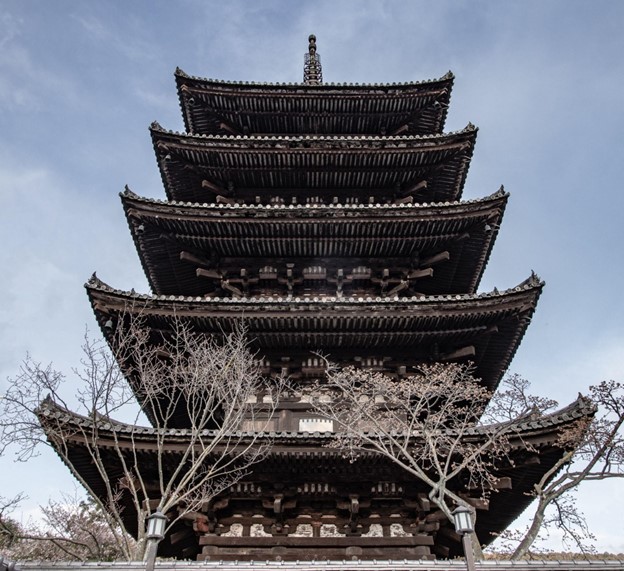
Ginkaku ji Temple – Silver Pavilion
Ginkakuji Temple, also known as the Silver Pavilion, is a must-visit destination in Kyoto, Japan. The temple boasts stunning gardens, including a moss garden with islands and bridges and a Zen garden with a sand tower. Visitors can also see the Sea of Silver Sand, a dry garden modeled after a renowned lake in China.
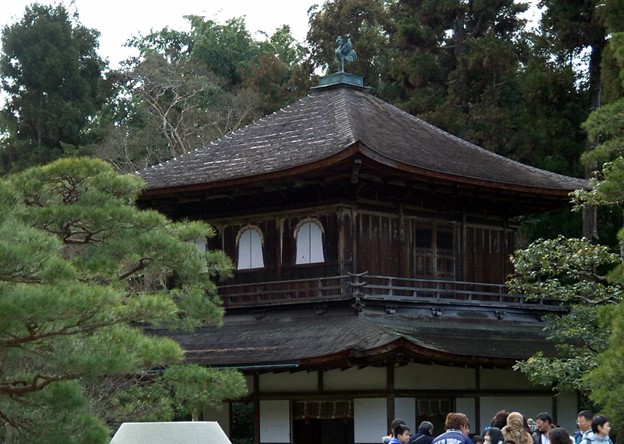
Ginkaku ji Temple – Silver Pavilion Wikimedia
The temple itself is a prime example of Higashiyama architecture and features the silver pavilion that gives the temple its name. Due to its immense popularity, it’s recommended that visitors come during off-peak times to appreciate the temple and its surroundings fully. Anyone planning a trip to Kyoto should put Ginkakuji Temple at the top of their list.
Don’t forget to get your training in by dropping in to CrossFit Kyoto. Getting to the location is as easy as riding the subway through Kyoto’s center!
Day 12: A Trip to Nara
Traveling to Nara from Kyoto is a straightforward journey that offers stunning scenery along the way. You can take the JR Nara Line from Kyoto Station to JR Nara Station, which takes about 45 minutes. Alternatively, you can use the local lines that run about three times an hour, and travel time varies from 40-70 minutes depending on the train you choose.
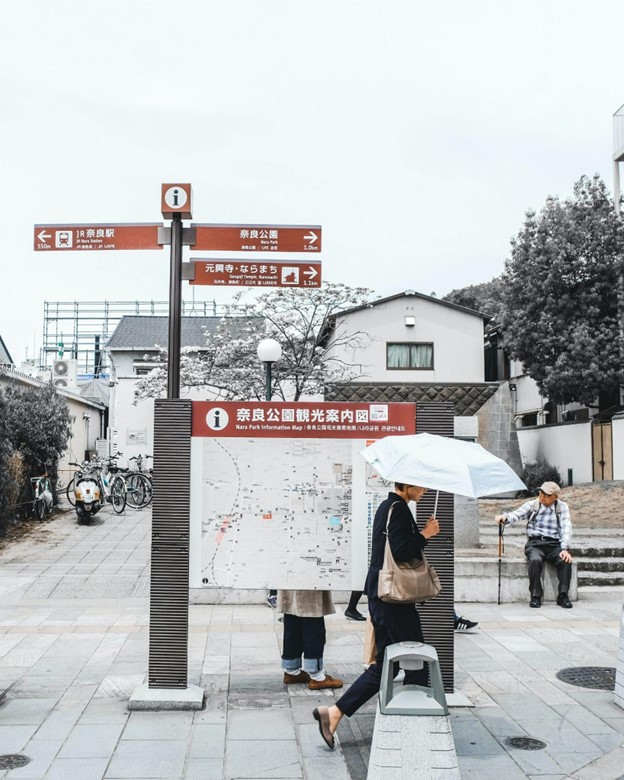
Exploring Hōryū-ji and its Museum
After arriving in Nara, exploring Hōryū-ji and its museum is a must-do activity on your Nara itinerary. The museum showcases many of the temple’s treasures, including intricate statues and artwork representing Japanese Buddhist art.
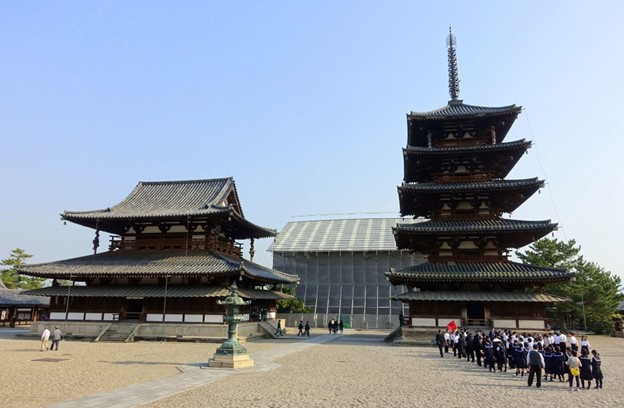
Hōryū-ji Wikimedia
The temple itself is a UNESCO World Heritage site and boasts some of the oldest wooden buildings in the world. You can explore the five-story pagoda, the main hall, and the surrounding gardens. There is even a small lake where you can sit and enjoy the peaceful surroundings.
Nara park
Next on the list of must-see destinations in Nara is the famous Nara Park. It is a sprawling public park that is home to over 1,000 free-roaming deer who have become an unofficial mascot of the city. Visitors can buy deer crackers to feed them, and it’s truly an unforgettable experience. Nara Park is also home to many historic temples and shrines, some dating back over 1,000 years. It’s a beautiful place to relax and enjoy nature, with plenty of walking paths leading through the park’s lush greenery. Any visit to Nara wouldn’t be complete without a stop at this incredible park, where you can get up close and personal with Japan’s cherished wildlife.
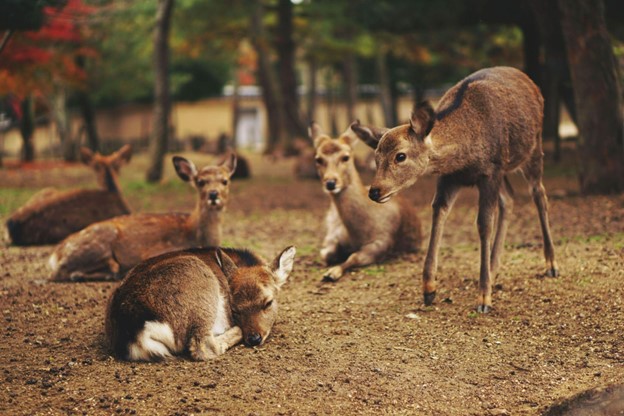
Nara Park
Nara Park also offers a great opportunity to experience Japanese cuisine in local restaurants. There are a variety of restaurants around Downtown Nara and Naramachi, ranging from traditional Japanese to European. For those who want to try authentic Japanese dishes made with fresh seasonal ingredients, Yamato no Sanzoku is a great choice. For an exceptional sushi experience, go to Maguro Goya. Enjoy your lunch at a restaurant in the area, and then continue your adventure for the rest of the day.
Kofukuji Five-Storied Pagoda

After exploring Horyuji and its museum, it’s time to make your way to the majestic Kofukuji Five-Story Pagoda, one of the most iconic landmarks in Nara city. As the second-tallest wooden pagoda in Japan, it certainly lives up to the hype. The temple grounds also include a three-storied pagoda and several other significant buildings that are a part of Japan’s rich history.
Getting to Kofukuji is easy as it’s a quick walk from Nara Park, where you can also meet the famous Nara deer. Make sure to take some time to appreciate the intricate details of this beautiful pagoda and capture some memorable photos to add to your trip’s photo album.
Sanjo-dori Street & Nakatanidou Mochi Shop
Your next destination can be reached by using the JR Nara Line Local and heading towards Sanjo-dori Street & the Nakatanidou Mochi Shop. This shopping street is just a two-minute walk away from Kintetsu Nara Station. The area is filled with quaint boutiques and shops, making it an ideal spot for souvenir shopping. The Nakatanidou Mochi Shop is the perfect place to sample some freshly made mochi, a chewy rice cake that is a favorite confection among locals.
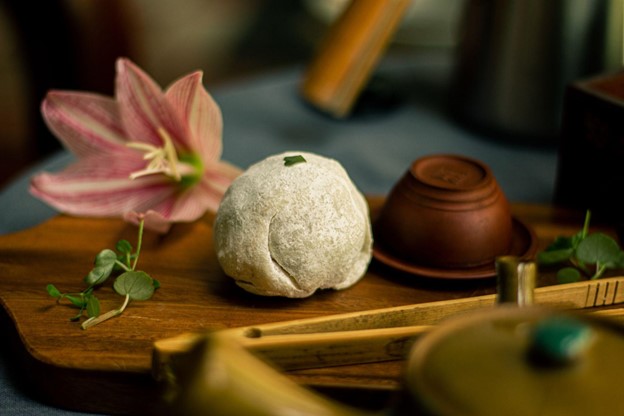
Mochi
This store is popular for its mochi-pounding performances, which take place hourly and will amaze visitors. After satisfying your sweet tooth, you can take a leisurely stroll along Sanjo-dori Street, which offers a variety of dining options and charming street food vendors. This is an excellent opportunity to delve into the local culture and see how the residents of Nara City live their daily lives.
Yoshikien or Isuien Garden
After exploring Hōryū-ji Temple and taking a picturesque ride on the JR Nara Line, visitors to Nara can find solace in the tranquil atmosphere of either Yoshikien or Isuien Garden. These beautiful gardens showcase various styles of Japanese landscaping and offer a serene place to rest after a busy day of sightseeing.
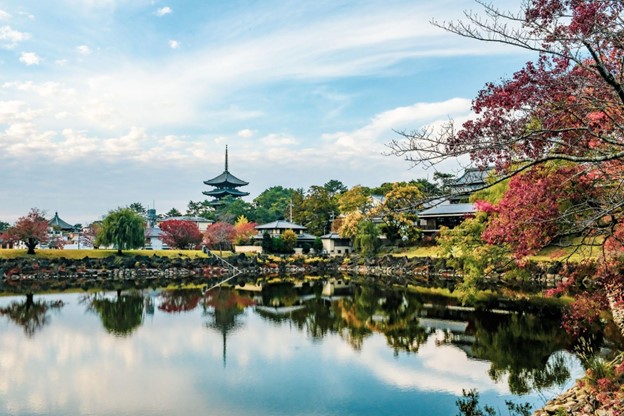
Nara Garden
Strolling through the rustic walkways and admiring the colorful foliage in Yoshikien Garden, one can truly feel the essence of Japanese beauty. Similarly, Isuien Garden presents the art of Japanese gardening in a breathtaking way, with its many streams, ponds, and stone bridges. Whether choosing to visit one garden or both, these soothing spaces provide the perfect opportunity to unwind and bask in the splendor of nature.
After a jam-packed Nara adventure, it’s time to head up to Hiroshima.
Day 13-14: Miyajima and Hiroshima
Both destinations are filled with history, culture, and beauty, leaving you in awe. From Nara, take the train to Osaka-Namba and then to Hiroshima. Travel time would be 2 hours and 30 minutes, then start your day 14, heading to the island of Miyajima.
Day 13: Miyajima
A day trip, Miyajima Island near Hiroshima offers a perfect escape. With its natural beauty and rich cultural heritage, Miyajima Island is a must-visit destination for travelers to Japan.
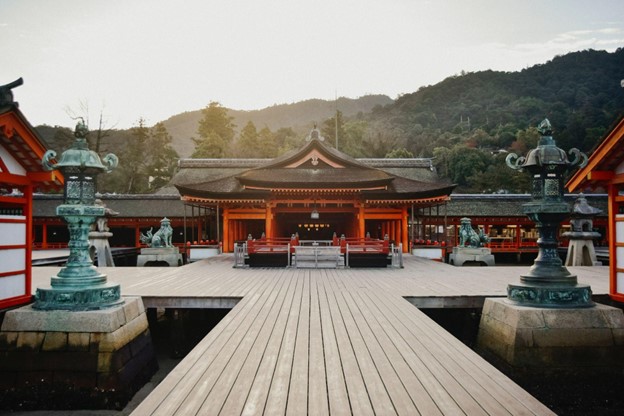
Itsukushima Shrine, Miyajima Island
The island offers a lot for visitors to explore. There will be so much to see and do on the island, including forest trails and visit to temples and shrines.
Itsukushima Shrine
Start your day trip with a visit to the most famous Itsukushima Shrine. The red torii gate on the shrine is famous for appearing to float on the water during high tide. Visitors can also interact with the island’s friendly deer, which roam freely on the island.
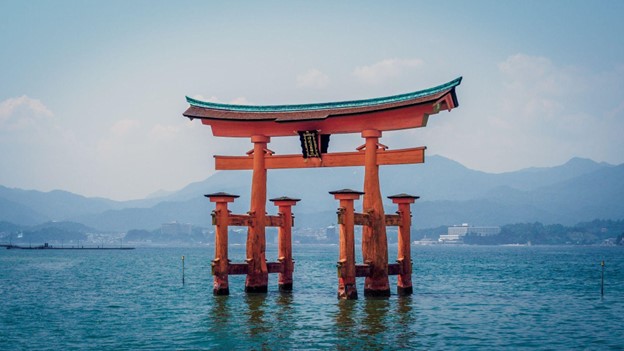
Daisho-in Temple
As the oldest Buddhist temple on the island, it is rich in history and culture. Hundreds of small statues lining the path up the hill enhance the temple’s serene beauty. Despite being overlooked by many tourists favoring Itsukushima Shrine, Daisho-in sees considerably fewer visitors, which adds to its peaceful atmosphere. Strange and exotic statues adorn the temple complex, providing ample opportunity to marvel at their intricate craftsmanship. A highlight of the temple is the hall of lights, which offers a magical ambiance with colorful lights. For those interested in learning more about the rich Buddhist culture of Japan, visiting Daisho-in Temple is a must-do activity.
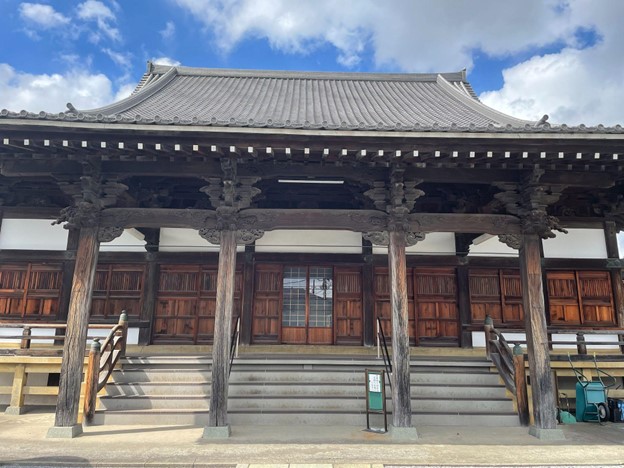
Mount Misen
Whether you’re an adventurer or a nature enthusiast, Mount Misen should be at the top of your list. Located 500 meters above sea level on Miyajima island, it offers breathtaking views of Seto Bay, primeval forests, and a serene island aerie. There are three hiking trails to the peak, each with varying difficulty levels and breathtaking scenery. If you don’t want to hike, the easy way up is taking the gondola. Bring plenty of water if you’re climbing Mount Misen in summer since it can get very hot, or change to buy cold water from a vending machine at the summit.
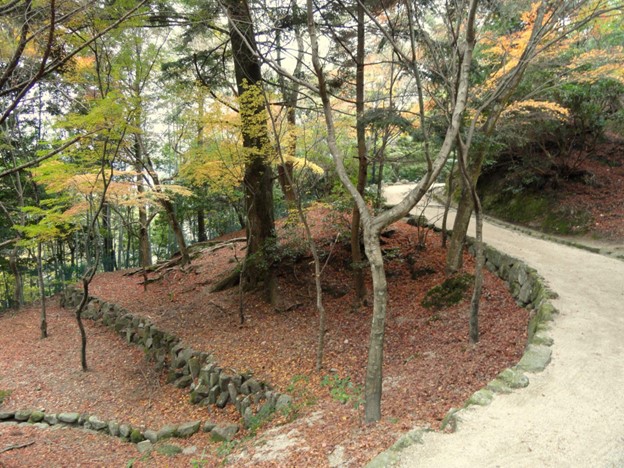
Momijidani Park
Largely untouched since the Edo Period, Momijidani Park boasts around 700 maple trees and is particularly beautiful in the autumn when their foliage erupts into reds, oranges, and yellows, typically around mid-November.
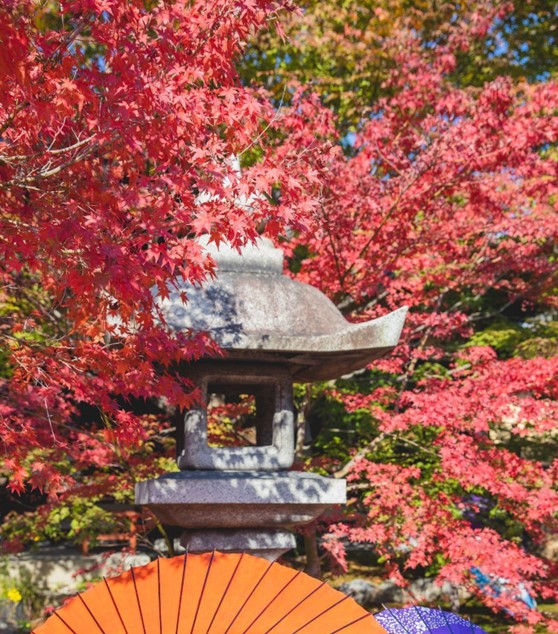
Momijidani Park Pexels
A top attraction at Momijidani Park is the Momijidani Ropeway. This ropeway is located in the middle of Momijidani Park and climbs Mount Misen up to the top. An amazing panoramic view of the city and a beautiful sunset can be viewed on this tour. A hike up the mountain is another option to experience the breathtaking scenery up close.
The Momijidani Suspension Bridge is another must-see attraction in the park. The 130-meter-long bridge provides visitors with an exhilarating experience as they walk above the Momijidani River, surrounded by colorful autumn leaves.
The park is also the perfect place for a picnic, with its many open spaces and benches perfect for relaxing and taking in the scenery. Visitors can also enjoy a boat ride on the river or visit the nearby temples and shrines, each with its own unique history and significance.
Senjokaku Pavilion
Finish your day trip to the island by visiting the Senjakaku pavilion. The great warlord Toyotomi Hideyoshi commissioned the pavilion and left it unfinished after his death. It was intended as a place for monks to copy sutras in the middle of nature. Despite its simple exterior, the five-story pagoda is an iconic hall feature.
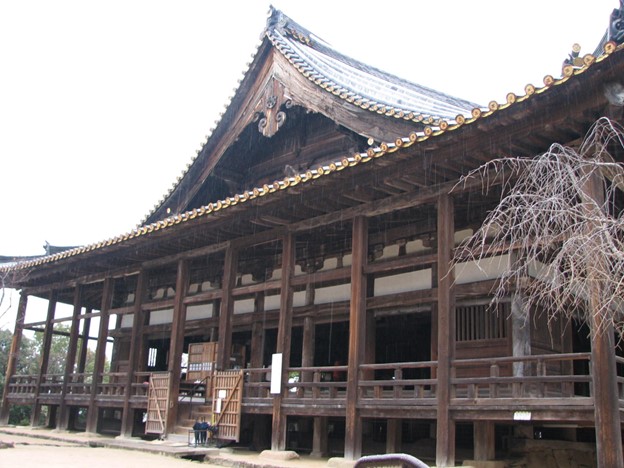
Senjokaku Wikimedia
Miyajima is a great place to stay for the night, or you can travel to Hiroshima to experience the city’s early morning sights.
Day 15: Hiroshima
Spend your final day in Hiroshima before returning to Tokyo for your evening or early morning flight on day 15. Hiroshima offers a lot of tourist destinations.
The site of the nuclear attack is the most popular destination. It is comprised of three attractions located in downtown Hiroshima. Among these are the Peace Memorial Museum, Peace Memorial Park, and the Atomic Bomb Dome, whose skeletal remains commemorate the nuclear war’s devastation.
The Peace Memorial Park is a haunting reminder of the devastating effects of nuclear warfare. Built to commemorate the victims of the atomic bombing on August 6th, 1945, this solemn site stands as a testament to the power of humanity and its capacity for destruction.
At the center of the park lies the Atomic Bomb Dome, which survived the bombing and is a powerful symbol of peace and hope. Surrounding the dome are memorials dedicated to those who lost their lives in the attack, including monuments honoring the victims, international peace efforts, and survivors’ stories.
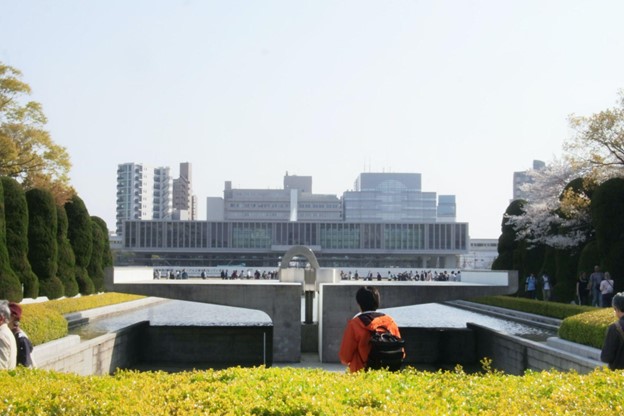
Peace Memorial Park
Visitors can also explore other attractions like Hiroshima Peace Memorial Museum, which displays artifacts from the atomic bomb explosion and its aftermath. The nearby Hiroshima National Peace Memorial Hall for the Atomic Bomb Victims also offers an opportunity to learn about the tragic event from various perspectives, including survivors’ testimonies and photographs.
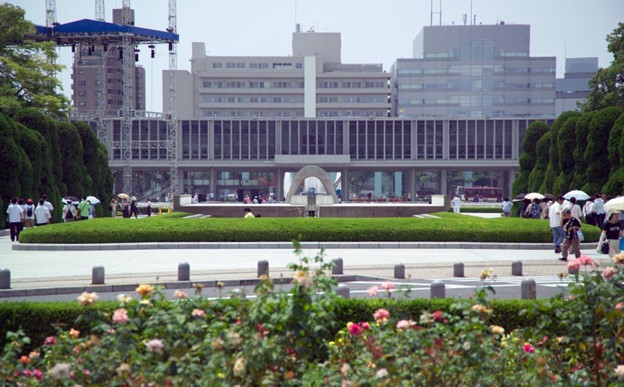
Peace Memorial Park and Museum Wikimedia
The park also contains many contemplative gardens and outdoor spaces, providing visitors with a quiet place to reflect.
The park offers a powerful experience and is certainly worth visiting if you are ever in Hiroshima. It will leave you with a profound understanding of the consequences of war and the need to spread peace worldwide.

Hiroshima
Hiroshima Castle
The castle is located within the city, which is a 15-minute walk from Peace Park. The castle was entirely destroyed by atomic bombing in 1945 and was reconstructed in 1958. The new structure was mostly built in concrete.
The castle’s five floors offer tourists a chance to learn more about the city’s history and see a variety of artifacts, Samurai armor, and weaponry. Also, you can have a panoramic city view on the top floor.
In the castle park, you can visit the Ni-no-maru, which is the second ring of defense around Hiroshima castle. Defensive walls still surround it, and its open area is now part of the park.
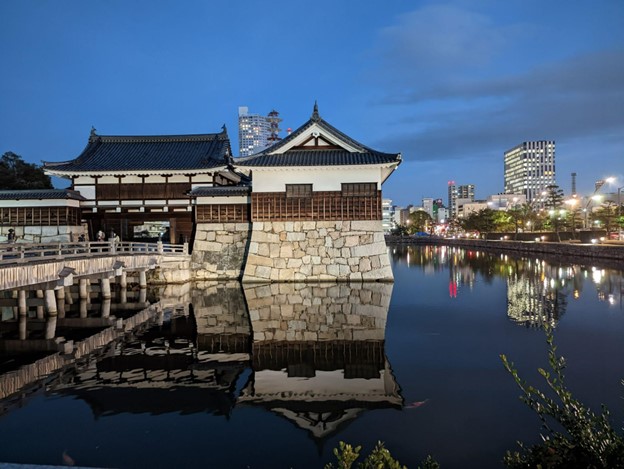
Hiroshima Castle
A little tea house called Oshiro-no-Chaya is a great place to stop after some time at the castle to enjoy a cold or hot beverage or ice cream made with matcha.
Hiroshima is also one of the best cities when it comes to food. It is famous for its okonomiyaki and is the source of the best oyster in Japan. Nagata-ya restaurant serves the best okonomiyaki in town. Enjoy your food before heading back to Tokyo for your flight. Be aware that the train trip back to Tokyo is about 4 hours long, so plan accordingly.
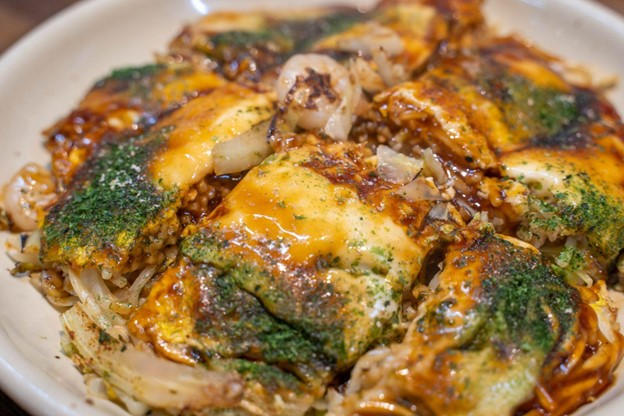
Okonomiyaki
Back to Tokyo
Having explored Japan for 14 days, it’s time to return to Tokyo for your flight back home. Taking in the countryside views on the way back from Hiroshima to Tokyo allows you to reflect on the past two weeks.
If you still have time, drop in to Crossfit Daikanyama for your training before heading to the airport.
Haneda Airport’s restaurants are the perfect choice for a delicious meal before catching a flight. There are good restaurants that serve Japanese classics like sushi and ramen. Ariso Sushi serves sushi with a conveyor belt style, or visit Yakiniku Champion to enjoy wagyu beef in Japanese barbeque style. After a great meal, you are now ready to board a plane home and reminisce how jam-packed are your 14 days in the amazing country of Japan.
Tips When Visiting Japan
Here are some of the best tips to enjoy your 14-day stay in Japan:
1. Respect Japanese culture. Japan has a deep and rich cultural heritage, so be mindful of the local customs and show respect for the people you meet. It would be beneficial to spend some time researching the country’s culture before arriving to make your visit smoother and more enjoyable.
2. Get acquainted with the language. Knowing at least some basic phrases in Japanese can go a long way, allowing you to communicate more effectively with locals and make your stay more comfortable. Make sure to take time to learn and practice basic words, such as greetings, thank-you’s, numbers, etc., before traveling.
3. Dress appropriately. Japanese people are known for their politeness and respect, so make sure to match their level of formality in your wardrobe choices. Clothing such as shorts, t-shirts, and flip-flops may be acceptable in some areas, but it’s still important to check with locals before wearing them.
4. Be conscious of your manners. Table manners, in particular, are taken very seriously in Japan. Make sure to avoid slurping your soup or making too much noise when chewing, as it’s considered rude. Furthermore, remember to say “itadakimasu” before eating and “gochisousama deshita” after meals.
5. Use cash for transactions. Credit cards are growing in popularity, but cash is still Japan’s most widely accepted form of payment. Therefore, make sure to bring enough bills with you when traveling around and always keep small changes handy. This will help you avoid unnecessary confusion or embarrassment in public.
6. Learn the art of bowing. Bowing is a common form of greeting in Japan, and it’s important to understand when and how to bow to show respect properly. A short bow with your hands at your sides is generally appropriate in most situations; however, there are other ways of bowing, depending on the context. Doing some research beforehand is necessary to avoid any awkwardness or misunderstanding.
7. Avoid making direct eye contact. Japanese people are generally more reserved and prefer not to make direct eye contact when talking, which can be interpreted as aggressive or confrontational. Therefore, it’s important to be aware of this custom and look more toward the ground when speaking to someone to show respect.
8. Be mindful of your surroundings. Japan is a densely populated country, so always being mindful of your surroundings is important. Noise levels should be kept low, especially in public areas such as train platforms or parks; avoid loud conversations, shouting, or making too much noise. Furthermore, make sure to keep your hands and feet to yourself when in public spaces.
9. Respect the food culture. Japanese cuisine is widely varied and deliciously diverse; however, it’s important to understand that certain foods are more appropriate than others in different situations. For example, sushi is popular at formal meals, while ramen is more suitable for casual gatherings. It’s important to be mindful of these customs and show respect when eating with locals or in public places.
10. Enjoy the experience. Visiting Japan can be an exciting and eye-opening experience, so make sure to savor the opportunity to explore and appreciate the unique culture. There is so much to see and do, from shopping in Tokyo’s bustling streets to visiting ancient temples and shrines; take your time to enjoy it all!
11. Make sure you are wearing the right shoes. Most of the time, you will be doing a lot of walking to visit nearby attractions; thus, wearing shoes perfect for walking, biking, or trekking will make your Japan adventure comfortable.
12. There is no need to give a tip in Japan. Attempting to tip staff can be offensive as they take pride in their work. Instead, expressing your appreciation with a few kind words and a bow or handshake is polite.
13. Visit Japan during the cherry blossom season. It is one of the most incredible times to visit the country. Remember that it could be the busiest time to be in Japan, but who will not love the cherry blossom season?
14. Buy tickets in advance to popular destinations/activities. This will really save you time in the queue, and some require pre-booking.
15. You can greatly benefit from Google maps and HyperDia when traveling to Japan. Remember to download the HyperDia app, as it will be a great guide to a location in Japan and is available in English. With this application, you can find train information, prices, and average journey times directly.
16. Buy a Pasmo card or a Suica card. Buying a reloadable IC card for train and bus travel time and money.
17. Better to fly to Haneda than to Narita airport. Haneda is geographically closer to Tokyo, which means it will be faster and easier for you to arrive at your hotel.
18. Make use of Google Translate. This will be very helpful in getting your message across quickly. However, train station signs and stop announcements are in English letters in Tokyo. Other restaurants also have their menu listed in English, and hotels and restaurant staff speak in English to help you.
19. Make use of luggage forwarding and luggage storage services. For visitors to Japan, using services such as luggage forwarding and storage can make your travels much more enjoyable. Luggage forwarding allows you to easily transport your bags from one location to another without carrying them around the whole trip. This is especially helpful for long trips or when visiting multiple cities. Additionally, luggage storage offers tourists the convenience of leaving their bags in a safe and secure location while they explore a city. This service can be especially useful when visiting attractions that do not allow large items such as backpacks or suitcases inside.
20. Know where to get cash. Even in Tokyo, finding ATMs accepting foreign cards can be difficult. It is important that your cards are activated for withdrawals in foreign countries.
There you have it. Hope you enjoy our itinerary for 14 days in Japan. Explore the other itineraries we offer to some Asian countries and discover a different side of this beautiful continent. From the bustling streets of Tokyo to the tranquil beauty of Bali, explore these unique cities and get to know the culture, history, and cuisine waiting for you! You’ll get an insider’s view of our favorite attractions, popular activities, and delicious local dishes so you can create your own unforgettable experiences. Whether you’re looking for an adventure, a romantic getaway, or a cultural experience, we have an itinerary that’s perfect for you.

